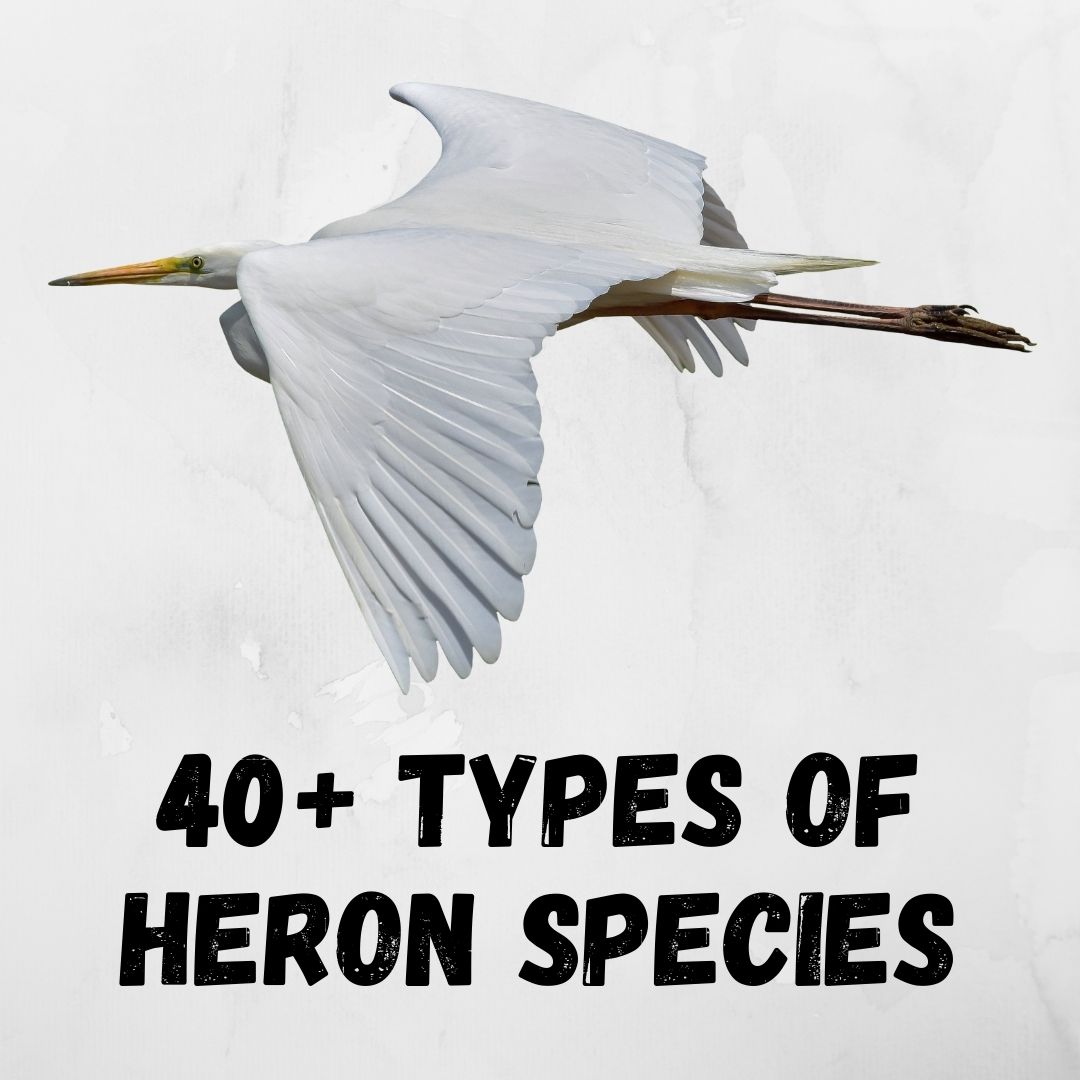Herons, elegant and adaptable wading birds, exhibit a remarkable diversity of species across the world. Ranging from the familiar Grey Heron to the elusive Von Schrenck’s Bittern, each species possesses unique characteristics, habitats, and behaviors. This article provides a comprehensive overview of various heron species, highlighting their distinctive features and contributions to the rich tapestry of avian life.
A Global Avian Mosaic: A Comprehensive Overview of Heron Species
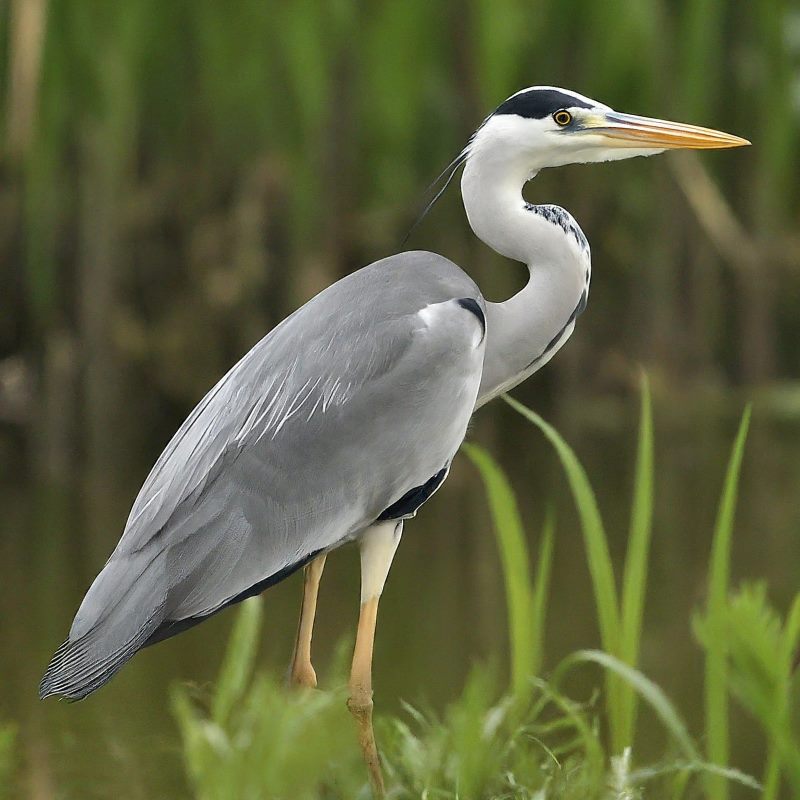
Post Contents
- 1. Grey Heron (Ardea cinerea)
- 2. Great Blue Heron (Ardea herodias)
- 3. Great Egret (Ardea alba)
- 4. Green Heron (Butorides virescens)
- 5. Tricolored Heron (Egretta tricolor)
- 6. Cattle Egret (Bubulcus ibis)
- 7. Black-crowned Night Heron (Nycticorax nycticorax)
- 8. Yellow-crowned Night Heron (Nyctanassa violacea)
- 9. Black Heron (Egretta ardesiaca)
- 10. American Bittern (Botaurus lentiginosus)
- 11. Least Bittern (Ixobrychus exilis)
- 12. Goliath Heron (Ardea goliath)
- 13. Striated Heron (Butorides striata)
- 14. Little Blue Heron (Egretta caerulea)
- 15. Little Egret (Egretta garzetta)
- 16. Boat-billed Heron (Cochlearius cochlearius)
- 17. Bare-throated Tiger Heron (Tigrisoma mexicanum)
- 18. Black-headed Heron (Ardea melanocephala)
- 19. Snowy Egret (Egretta thula)
- 20. Squacco Heron (Ardeola ralloides)
- 21. White-faced Heron (Egretta novaehollandiae)
- 22. Agami Heron (Agamia agami)
- 23. Little Bittern (Ixobrychus minutus)
- 24. Yellow Bittern (Ixobrychus sinensis)
- 25. Australasian Bittern (Botaurus poiciloptilus)
- 26. Pacific Reef Heron (Egretta sacra)
- 27. Eurasian Bittern (Botaurus stellaris)
- 28. White-backed Night Heron (Gorsachius leuconotus)
- 29. White-eared Night Heron (Gorsachius coerulescens)
- 30. Stripe-backed Bittern (Ixobrychus involucris)
- 31. Dwarf Bittern (Ixobrychus sturmii)
- 32. Capped Heron (Pilherodius pileatus)
- 33. Lava Heron (Butorides sundevalli)
- 34. Eastern Cattle Egret (Bubulcus coromandus)
- 35. Whistling Heron (Syrigma sibilatrix)
- 36. Indian Pond Heron (Ardeola grayii)
- 37. Reddish Egret (Egretta rufescens)
- 38. Purple Heron (Ardea purpurea)
- 39. White-bellied Heron (Ardea insignis)
- 40. Chinese Pond Heron (Ardeola bacchus)
- 41. Malayan Night Heron (Gorsachius melanolophus)
- 42. Rufescent Tiger Heron (Tigrisoma lineatum)
- 43. White-necked Heron (Ardea pacifica)
- 44. Javan Pond Heron (Ardeola speciosa)
- 45. Cocoi Heron (Ardea cocoi)
- 46. Malagasy Pond Heron (Ardeola idae)
- 47. Humblot’s Heron (Ardea humbloti)
- 48. Great-billed Heron (Ardea sumatrana)
- 49. Nankeen Night Heron (Nycticorax caledonicus)
- 50. Japanese Night Heron (Gorsachius goisagi)
- 51. Von Schrenck’s Bittern (Ixobrychus eurhythmus)
- Conclusion
- (FAQs) Related to herons:
1. Grey Heron (Ardea cinerea)
The Grey Heron, a widespread and iconic species, is known for its ash-gray plumage, long legs, and neck. Often found in a variety of wetland habitats, including lakes and rivers, Grey Herons patiently stalk their prey, which primarily consists of fish, amphibians, and small mammals. Their adaptability and elegant appearance make them a familiar sight in both urban and rural landscapes.
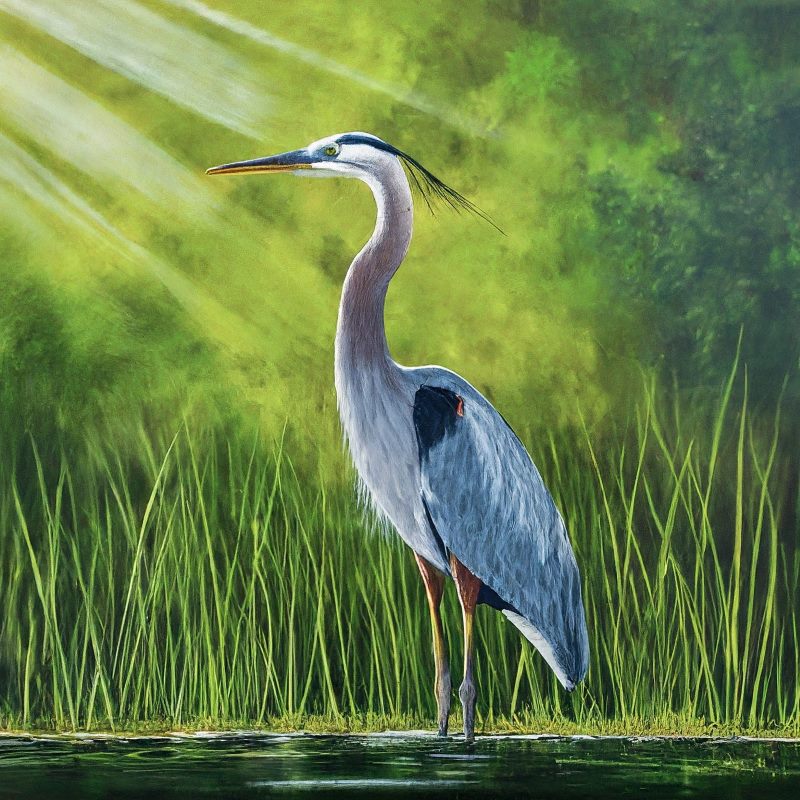
2. Great Blue Heron (Ardea herodias)
The Great Blue Heron, native to North and Central America, is characterized by its impressive size, blue-gray plumage, and a distinctive dagger-like bill. These herons inhabit diverse environments, from coastal areas to freshwater habitats. Renowned for their patience in hunting and striking appearance, Great Blue Herons play a crucial role in maintaining aquatic ecosystems.
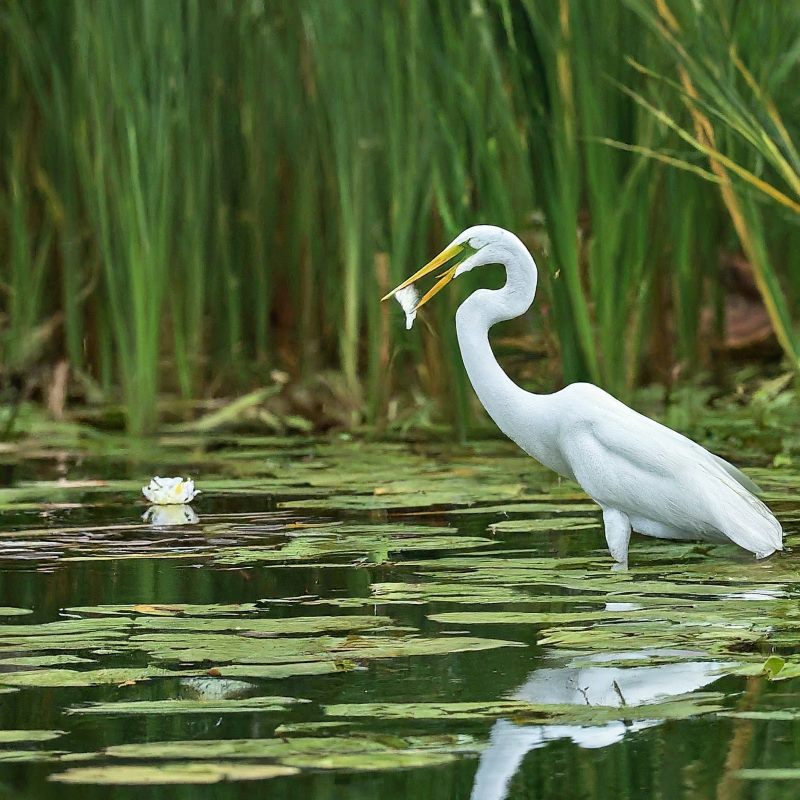
3. Great Egret (Ardea alba)
The Great Egret, a symbol of elegance, features pristine white plumage, a long neck, and a slender build. Found on almost every continent, except Antarctica, Great Egrets are skilled hunters, preying on fish, amphibians, and small mammals. Their presence in wetlands and coastal areas contributes to the biodiversity and ecological balance of these habitats.
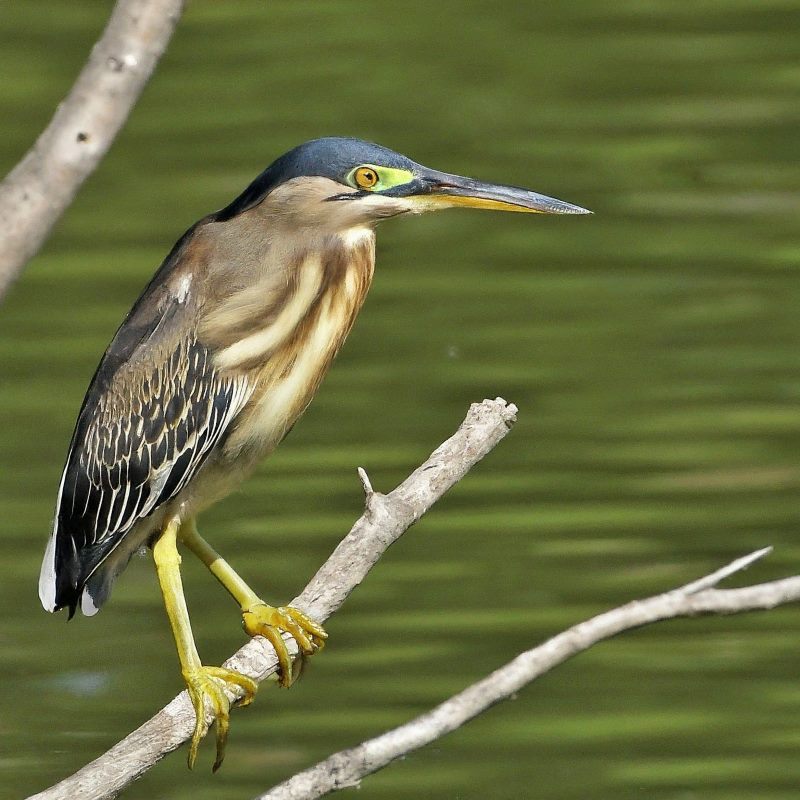
4. Green Heron (Butorides virescens)
The Green Heron, a small and colorful species, stands out with its greenish-black plumage and keen hunting skills. Inhabiting a range of wetland environments, including ponds and mangroves, Green Herons are adept at using tools, such as twigs, to attract fish. Their adaptability and ability to thrive in various ecosystems make them a fascinating member of the heron family.
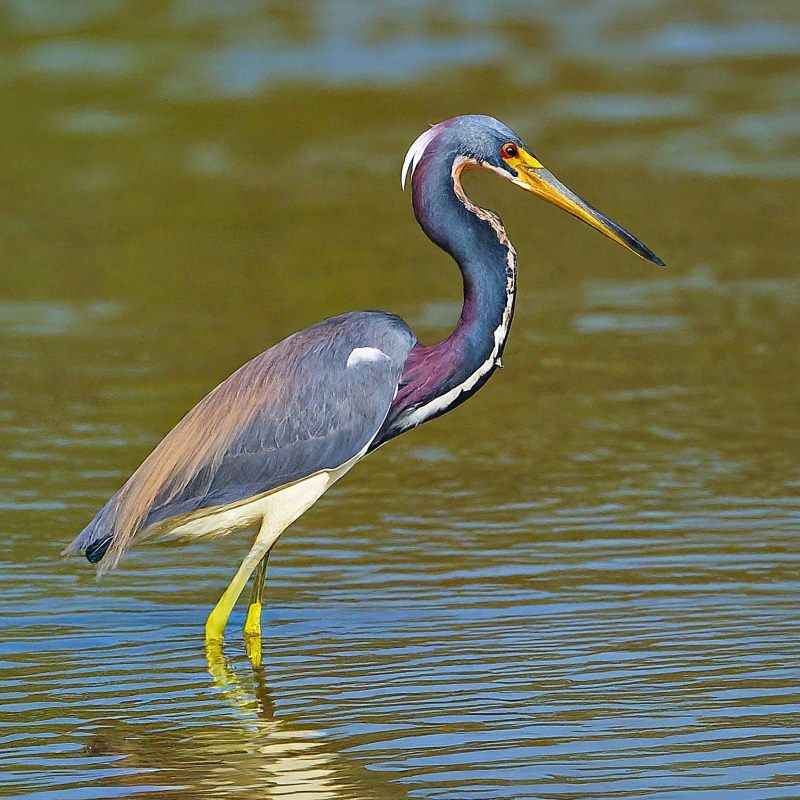
5. Tricolored Heron (Egretta tricolor)
The Tricolored Heron, native to the Americas, adds a vibrant touch to wetland landscapes during the breeding season. With blue-gray body plumage, a white neck, and tricolor markings, these herons are skilled hunters, capturing fish, crustaceans, and insects. Their dynamic presence and hunting techniques contribute to the biodiversity of coastal and freshwater habitats.
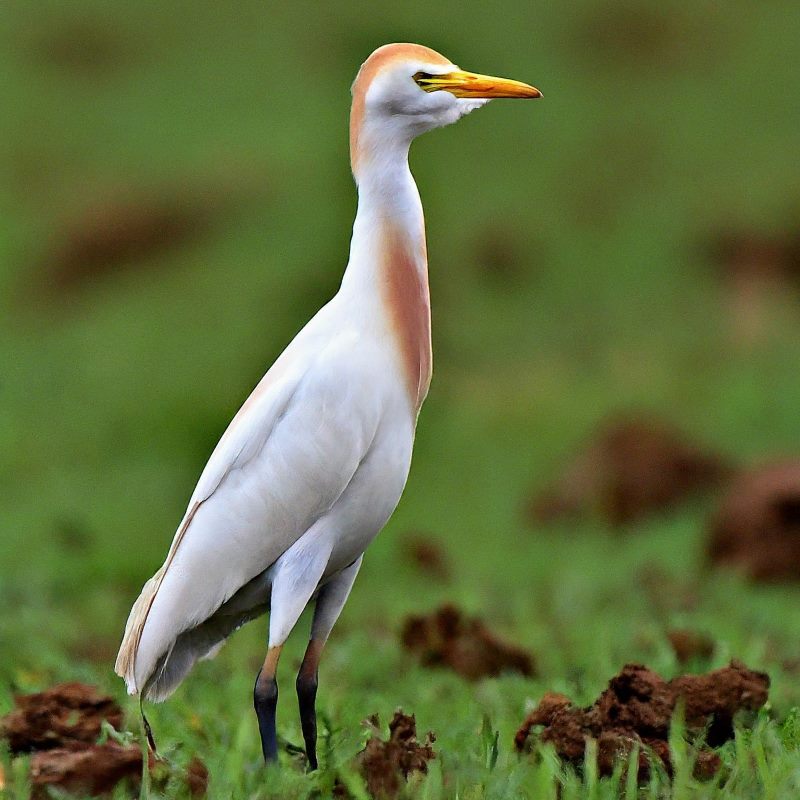
6. Cattle Egret (Bubulcus ibis)
The Cattle Egret, known for its association with grazing animals, features white plumage and contrasting yellow-orange beak and legs. Originally from Africa, Cattle Egrets have expanded their range globally, often seen foraging for insects stirred by the movement of cattle or other large mammals. Their adaptability and symbiotic relationship with livestock make them a unique and widespread species.
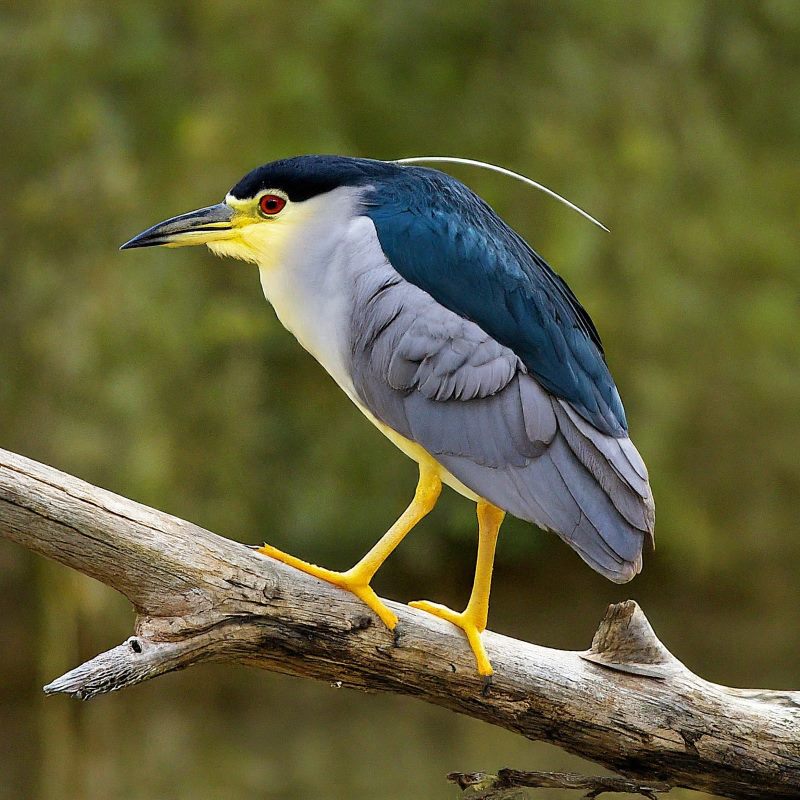
7. Black-crowned Night Heron (Nycticorax nycticorax)
The Black-crowned Night Heron, a widespread species found on every continent except Antarctica, is recognized by its black crown and back. Preferring nocturnal hunting, these herons stalk prey like fish and crustaceans during the night. Their adaptability to diverse environments, including urban areas, showcases their resilience in the face of changing landscapes.
8. Yellow-crowned Night Heron (Nyctanassa violacea)
The Yellow-crowned Night Heron, native to the Americas, exhibits distinctive yellow facial markings and reddish-brown plumage. Primarily nocturnal hunters, these herons forage for crustaceans, fish, and insects in coastal areas and wetlands. Their adaptability to urban environments makes them a resilient species facing habitat changes.
9. Black Heron (Egretta ardesiaca)
The Black Heron, native to sub-Saharan Africa, is recognized for its entirely black plumage and unique hunting behavior. Using its wings like an umbrella, Black Herons create shade to attract fish. This umbrella-like technique, combined with their stealth, sets them apart as one of the more intriguing members of the heron family.
10. American Bittern (Botaurus lentiginosus)
The American Bittern, a secretive and camouflaged heron, is native to North and Central America. With streaked brown plumage that helps it blend into its marshy surroundings, the American Bittern is often heard making a distinctive “pump-er-lunk” call. Their habitat preference for dense vegetation near water makes them challenging to spot but adds to their allure for birdwatchers.
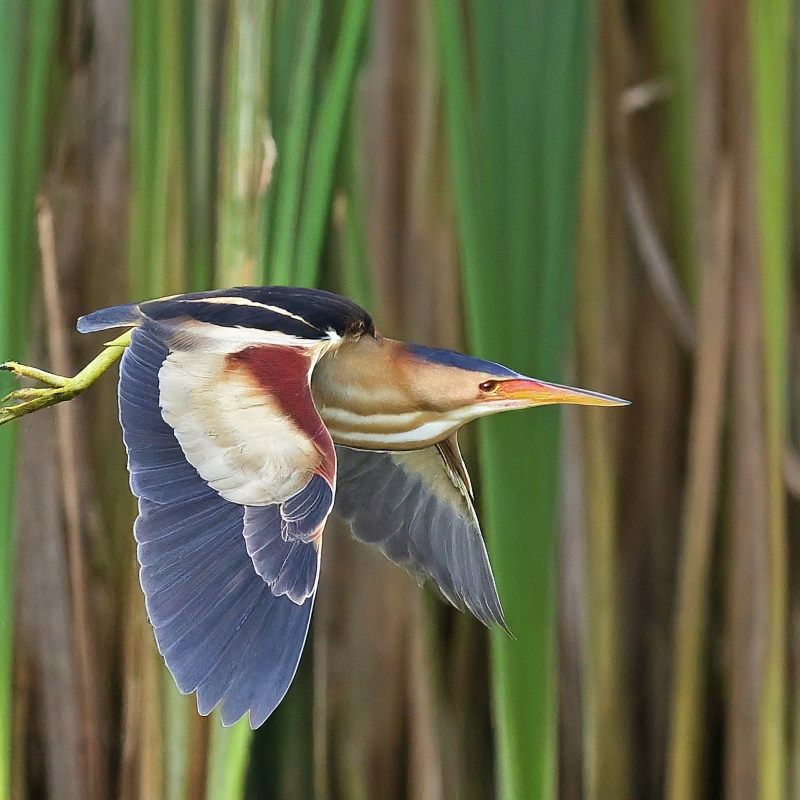
11. Least Bittern (Ixobrychus exilis)
The Least Bittern, the smallest heron species in North America, is characterized by its cryptic plumage and secretive nature. Inhabiting dense reed beds and marshes, these herons are often heard emitting distinctive calls while navigating through thick vegetation. The Least Bittern’s small size and elusive behavior make them a rewarding but challenging sighting for bird enthusiasts.

12. Goliath Heron (Ardea goliath)
The Goliath Heron, holding the title of the world’s largest heron species, stands over four feet tall. With a striking white head and neck, chestnut-colored body, and a dagger-like bill, Goliath Herons are majestic inhabitants of African and South Asian wetlands. Their imposing size and patient hunting style contribute to their status as one of the iconic members of the heron family.
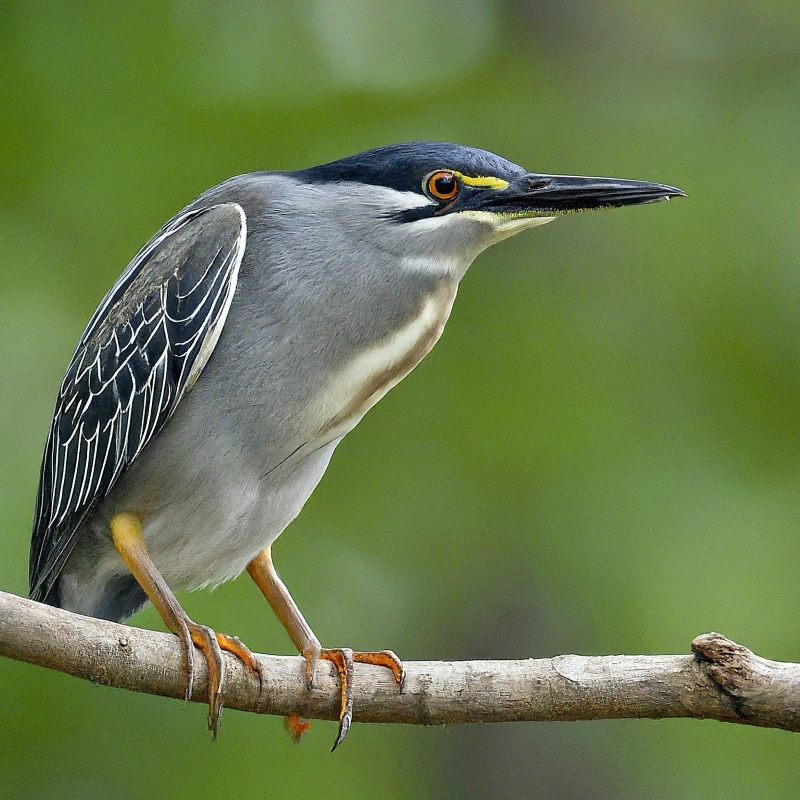
13. Striated Heron (Butorides striata)
The Striated Heron, found in various coastal and freshwater habitats worldwide, is characterized by its striated or streaked plumage. Also known as the Mangrove Heron, these birds are skilled hunters, preying on fish, crustaceans, and insects. Their adaptability to diverse environments, including mangroves and estuaries, showcases their versatility as a heron species.
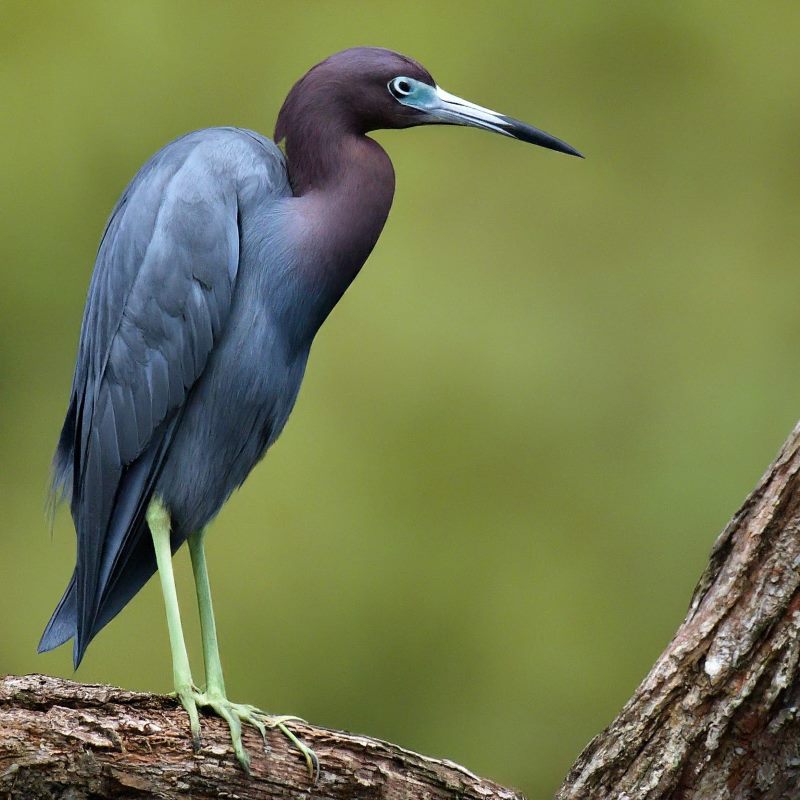
14. Little Blue Heron (Egretta caerulea)
The Little Blue Heron undergoes a fascinating color transformation from entirely white as a juvenile to blue-gray plumage as an adult. Found in wetland habitats across the Americas, including ponds and streams, these herons use their sharp bills to forage for fish, crustaceans, and insects. Their ability to adapt to diverse environments contributes to their widespread distribution.
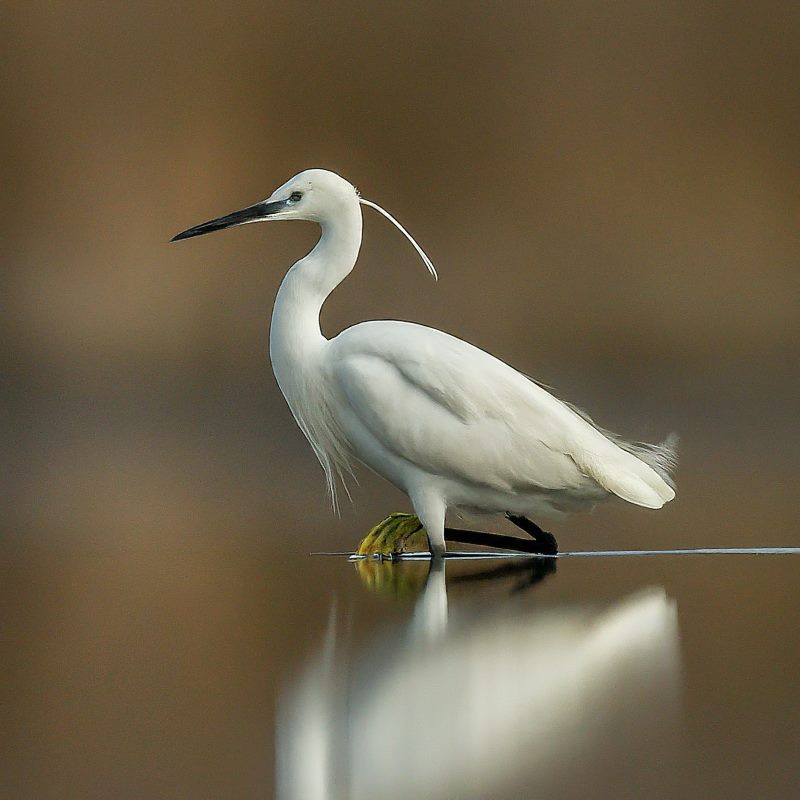
15. Little Egret (Egretta garzetta)
The Little Egret, with its slender build and pristine white plumage, is native to Europe, Asia, and Africa. Often found in coastal areas and wetlands, these herons are skilled hunters, utilizing their sharp bills to catch fish and invertebrates. The Little Egret’s graceful appearance adds to its charm as a member of the heron family.
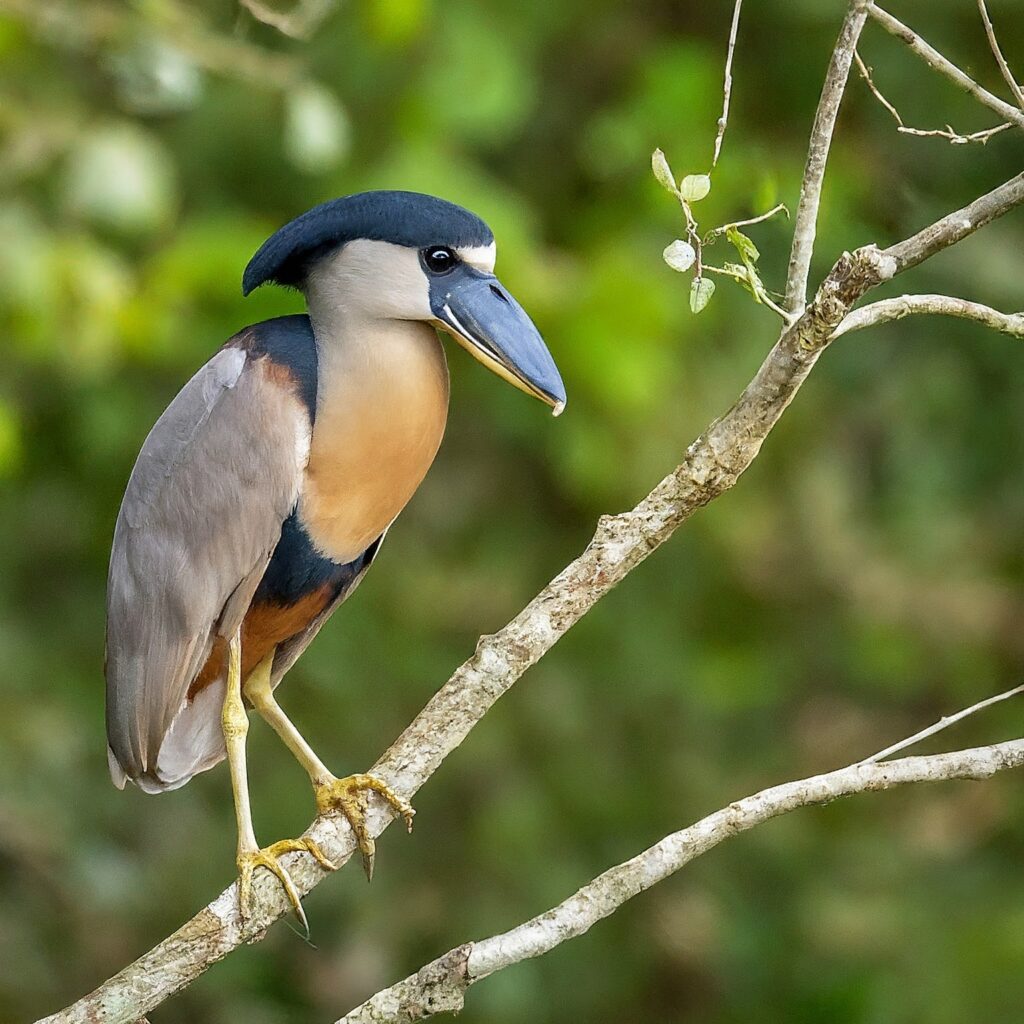
16. Boat-billed Heron (Cochlearius cochlearius)
The Boat-billed Heron, native to parts of Central and South America, stands out with its distinctive boat-shaped bill. Inhabiting mangroves, swamps, and coastal areas, these herons are nocturnal hunters, preying on fish and crustaceans. Their unique bill and secretive behavior make them a captivating species for observation.
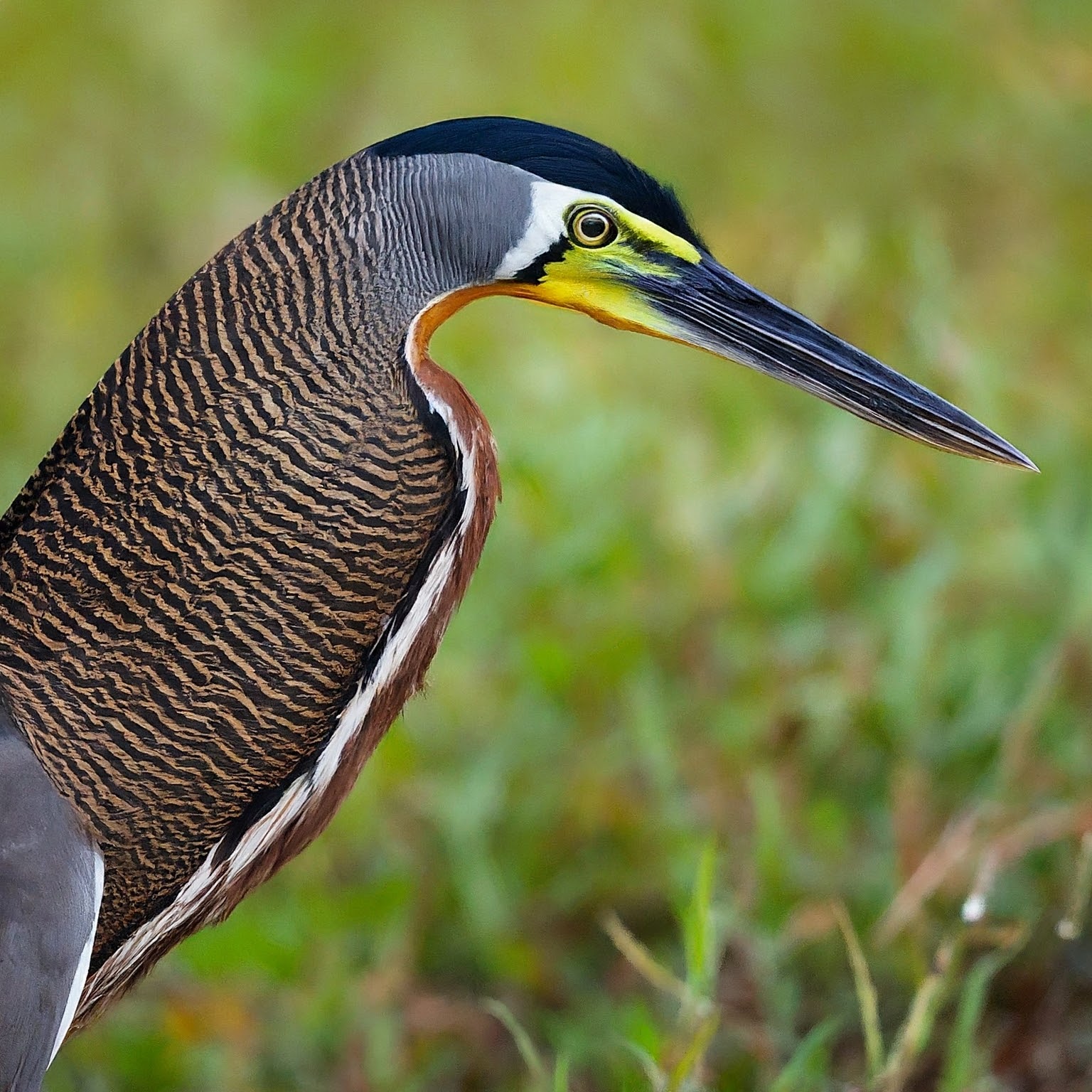
17. Bare-throated Tiger Heron (Tigrisoma mexicanum)
The Bare-throated Tiger Heron, found in Central and South America, is recognized by its striking appearance, featuring a bare blue facial patch and a distinctive call resembling a tiger’s roar. Inhabiting riverbanks and wetlands, these herons are skilled hunters, capturing fish, amphibians, and small reptiles with their sharp bills.
18. Black-headed Heron (Ardea melanocephala)
The Black-headed Heron, native to sub-Saharan Africa, is characterized by its black head and neck. Found in a variety of habitats, including wetlands and grasslands, these herons are skilled hunters, preying on fish, insects, and small mammals. The Black-headed Heron’s adaptability contributes to its widespread distribution.
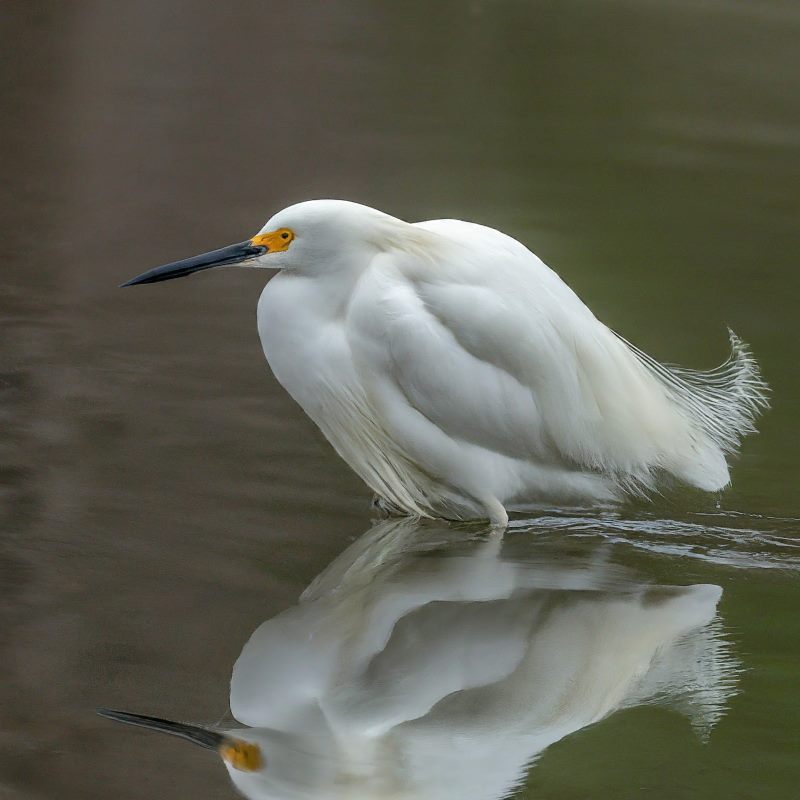
19. Snowy Egret (Egretta thula)
The Snowy Egret, a small heron species with pristine white plumage, long black legs, and striking yellow facial skin, is native to the Americas. Skilled aviators, Snowy Egrets soar above wetlands and coastal areas, employing a delicate and precise hunting technique using their bright yellow feet to stir up prey in shallow waters.
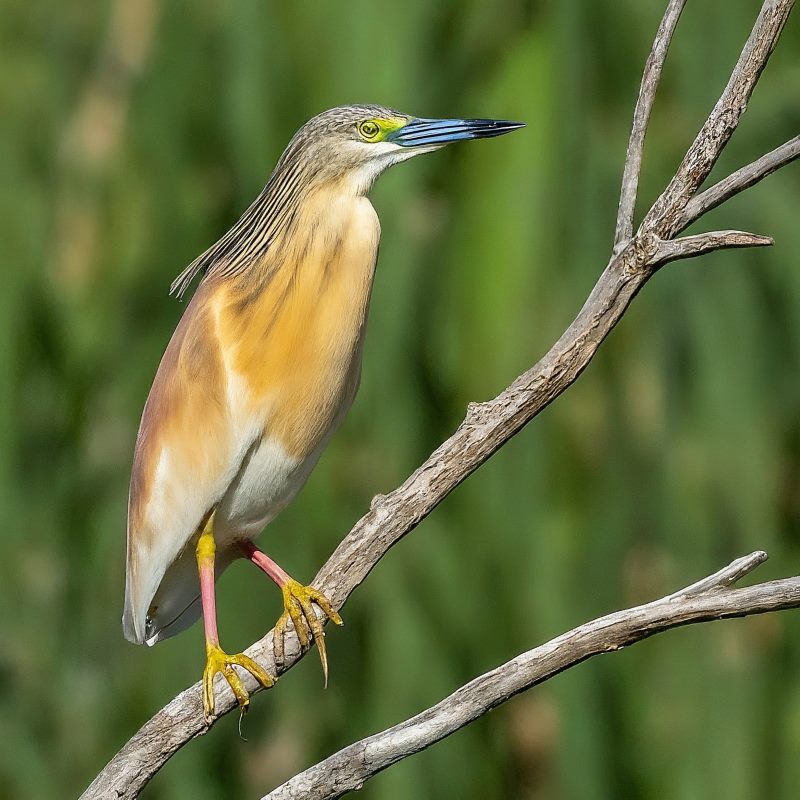
20. Squacco Heron (Ardeola ralloides)
The Squacco Heron, a small heron species with distinctive orange-buff plumage, is found in wetlands, marshes, and shallow waters across Europe, Africa, and Asia. Nomadic in nature, Squacco Herons move in response to changing water levels, displaying a patient hunting style as they wait for fish, amphibians, and insects to come within reach.
21. White-faced Heron (Egretta novaehollandiae)
The White-faced Heron, a versatile and adaptable species, is commonly found in Australia, New Zealand, and parts of Asia. Recognized for its white face and neck, these herons inhabit various environments, including coastal areas, lakes, and rivers. Versatile hunters, White-faced Herons prey on fish, insects, and small vertebrates with their sharp bills.
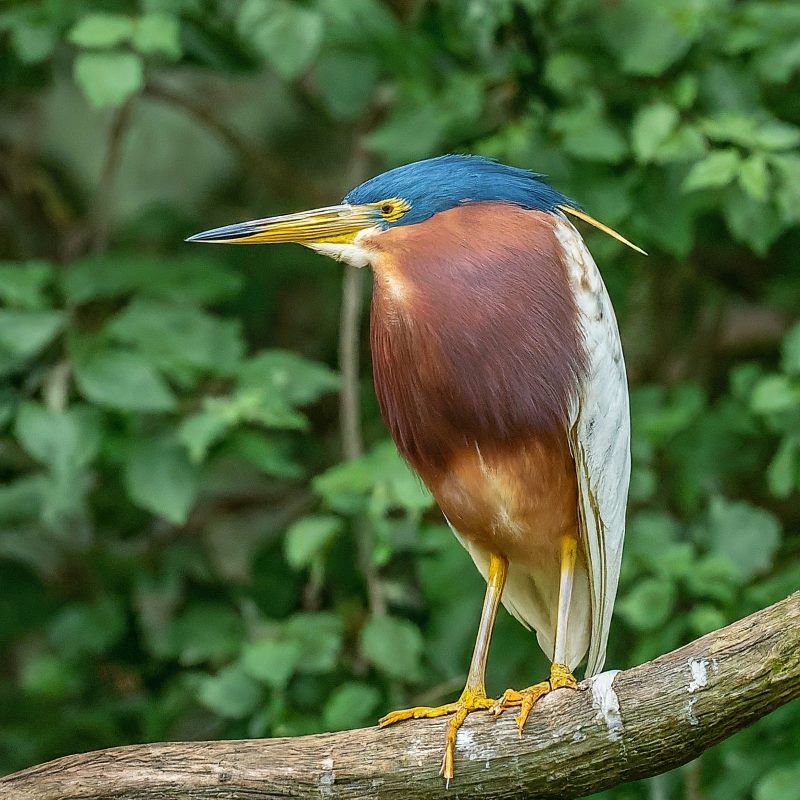
22. Agami Heron (Agamia agami)
The Agami Heron, native to Central and South America, is known for its iridescent blue and chestnut plumage. Inhabiting tropical forests and wetlands, these herons are elusive and often observed near secluded water bodies. The Agami Heron’s captivating appearance and habitat preferences make it a sought-after species for birdwatchers.
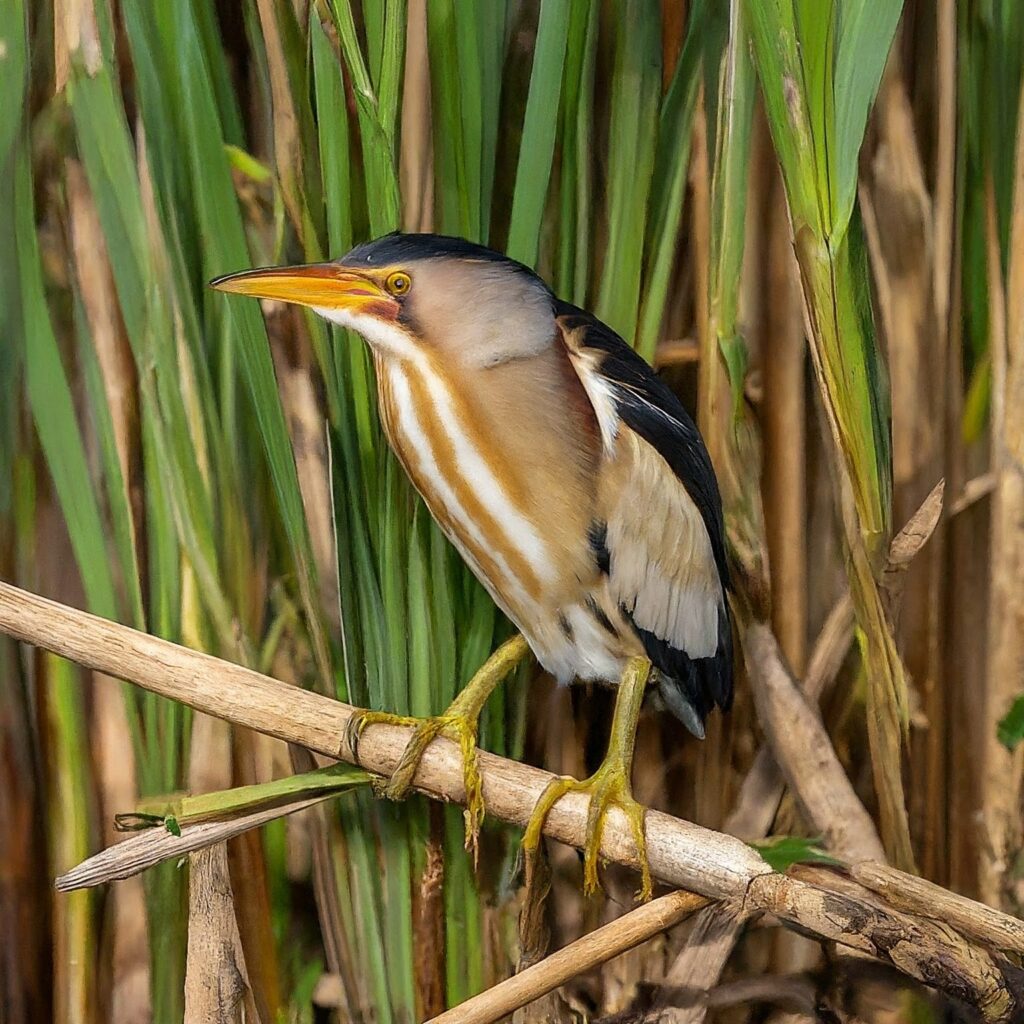
23. Little Bittern (Ixobrychus minutus)
The Little Bittern, a small and cryptic heron species, is found in wetlands and reed beds across Europe, Asia, and Africa. With streaked brown plumage, these herons blend seamlessly into dense vegetation. Often heard emitting distinctive calls, Little Bitterns navigate through reeds in search of fish and insects, showcasing their adaptability to marshy environments.
24. Yellow Bittern (Ixobrychus sinensis)
The Yellow Bittern, native to Asia and parts of Australasia, is recognized by its streaked brown plumage and distinctive calls. Inhabiting wetlands and marshes, these herons are skilled hunters, preying on fish and insects. Their ability to navigate through dense vegetation adds to their allure as a species adapted to marshy environments.
25. Australasian Bittern (Botaurus poiciloptilus)
The Australasian Bittern, native to Australia, New Zealand, and nearby islands, is characterized by its streaked brown plumage and cryptic appearance. Inhabiting reed beds and wetlands, these herons are elusive and often difficult to spot. Conservation efforts are crucial to ensuring the survival of this unique and vulnerable heron species.
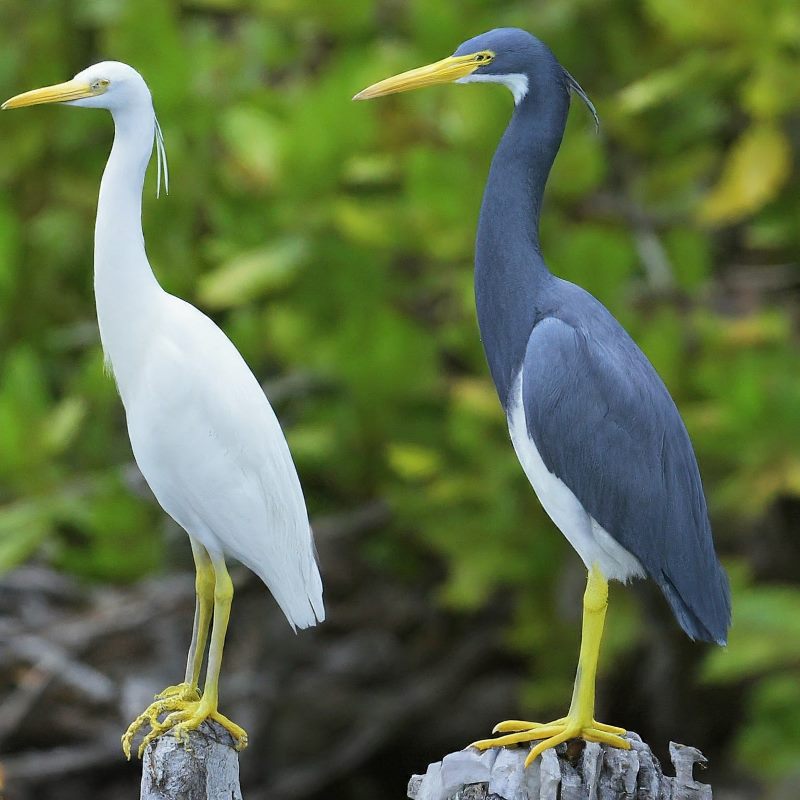
26. Pacific Reef Heron (Egretta sacra)
The Pacific Reef Heron, found in coastal areas and islands across the Indian and Pacific Oceans, exhibits a variable plumage, including dark and light color morphs. Skilled hunters, these herons capture a variety of prey, including fish and crustaceans, in rocky shorelines and coral reefs. Their adaptability to coastal environments contributes to their widespread distribution.
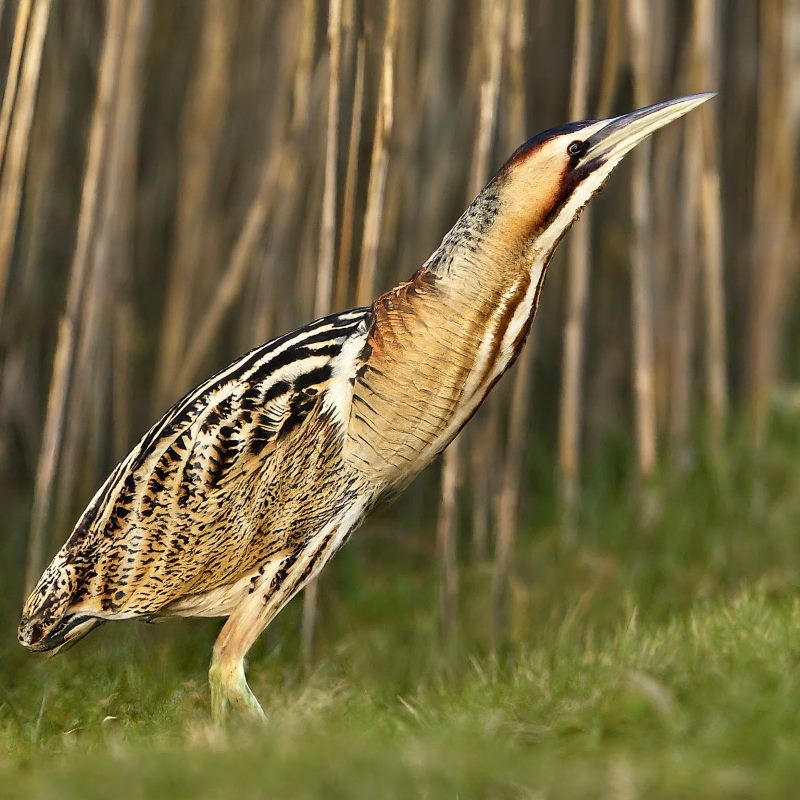
27. Eurasian Bittern (Botaurus stellaris)
The Eurasian Bittern, distributed across Europe, Asia, and parts of Africa, is known for its booming calls during the breeding season. With streaked brown plumage and a cryptic appearance, these herons inhabit reed beds and wetlands. The Eurasian Bittern’s unique vocalizations add to its mystique as a species adapted to marshy environments.
28. White-backed Night Heron (Gorsachius leuconotus)
The White-backed Night Heron, native to sub-Saharan Africa, is characterized by its distinctive white back and black crown. Inhabiting dense forests and wetlands, these herons are primarily nocturnal hunters, foraging for fish and invertebrates under the cover of darkness. Their elusive nature and striking appearance make them a captivating species for bird enthusiasts.
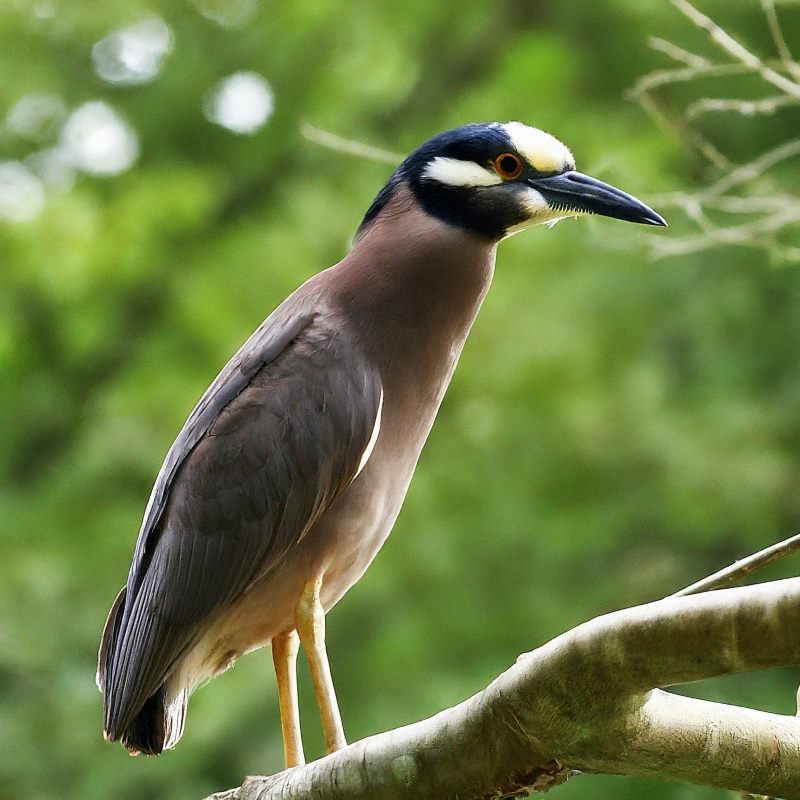
29. White-eared Night Heron (Gorsachius coerulescens)
The White-eared Night Heron, found in parts of Southeast Asia, is recognized by its white ear tufts and nocturnal habits. Inhabiting dense forests and wetlands, these herons navigate through darkness in search of prey. The White-eared Night Heron’s unique features and behavior contribute to its allure as a species adapted to nocturnal environments.
30. Stripe-backed Bittern (Ixobrychus involucris)
The Stripe-backed Bittern, native to South America, is characterized by its streaked and cryptic plumage. Inhabiting marshes and wetlands, these herons are often observed navigating through dense vegetation. The Stripe-backed Bittern’s adaptability to diverse environments adds to its significance as a member of the heron family.
31. Dwarf Bittern (Ixobrychus sturmii)
The Dwarf Bittern, found in sub-Saharan Africa, is recognized for its small size and streaked plumage. Inhabiting wetlands and reed beds, these herons are often challenging to spot due to their cryptic appearance. The Dwarf Bittern’s petite size and elusive nature make it a captivating species for birdwatchers in search of unique and diminutive herons.
32. Capped Heron (Pilherodius pileatus)
The Capped Heron, native to Central and South America, is known for its striking appearance, featuring a black cap on its head and a distinctive crest. Inhabiting tropical forests and wetlands, these herons are often observed near secluded water bodies. The Capped Heron’s unique features and habitat preferences make it a sought-after species for birdwatchers.
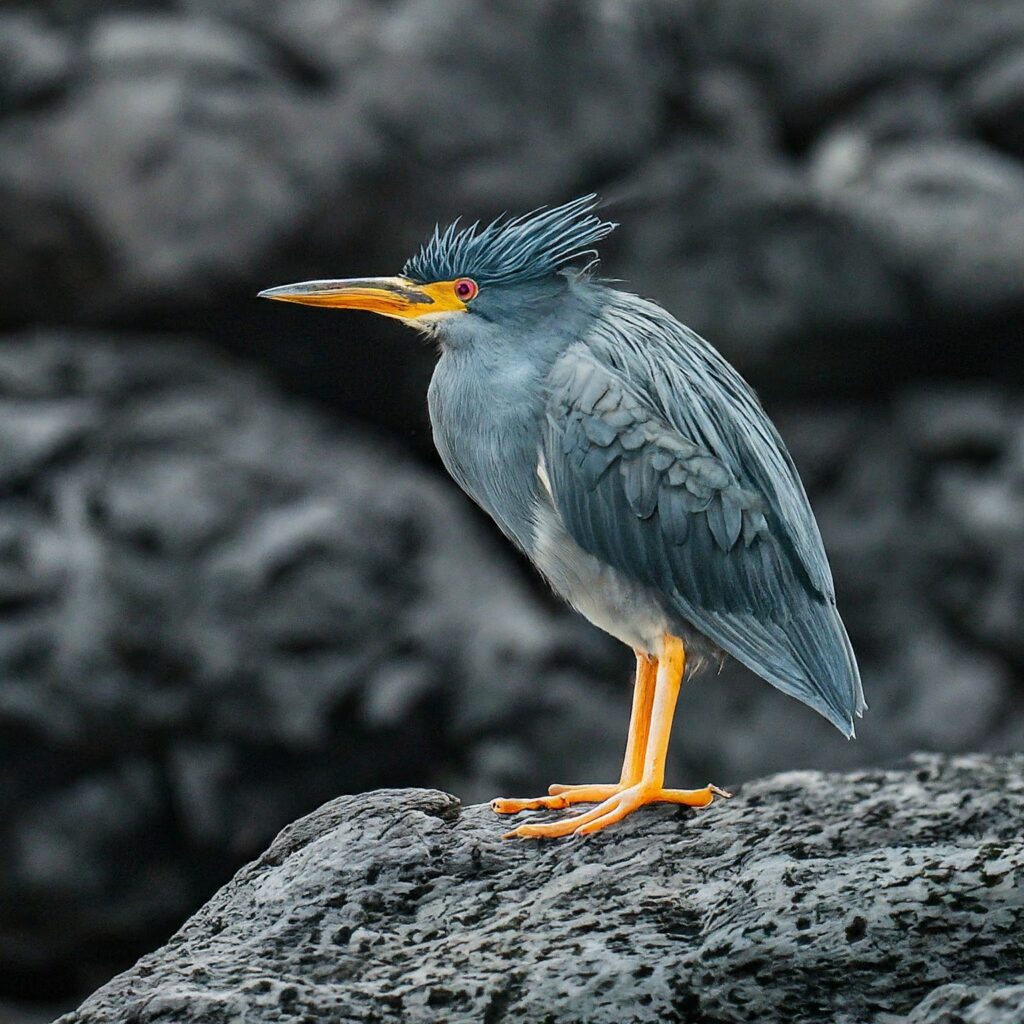
33. Lava Heron (Butorides sundevalli)
The Lava Heron, endemic to the Galápagos Islands, showcases unique adaptations to its volcanic habitat. With dark plumage that camouflages against lava rocks, these herons are skilled hunters in rocky shorelines. The Lava Heron’s restricted distribution and specialized adaptations make it a fascinating example of heron species evolving in isolated environments.
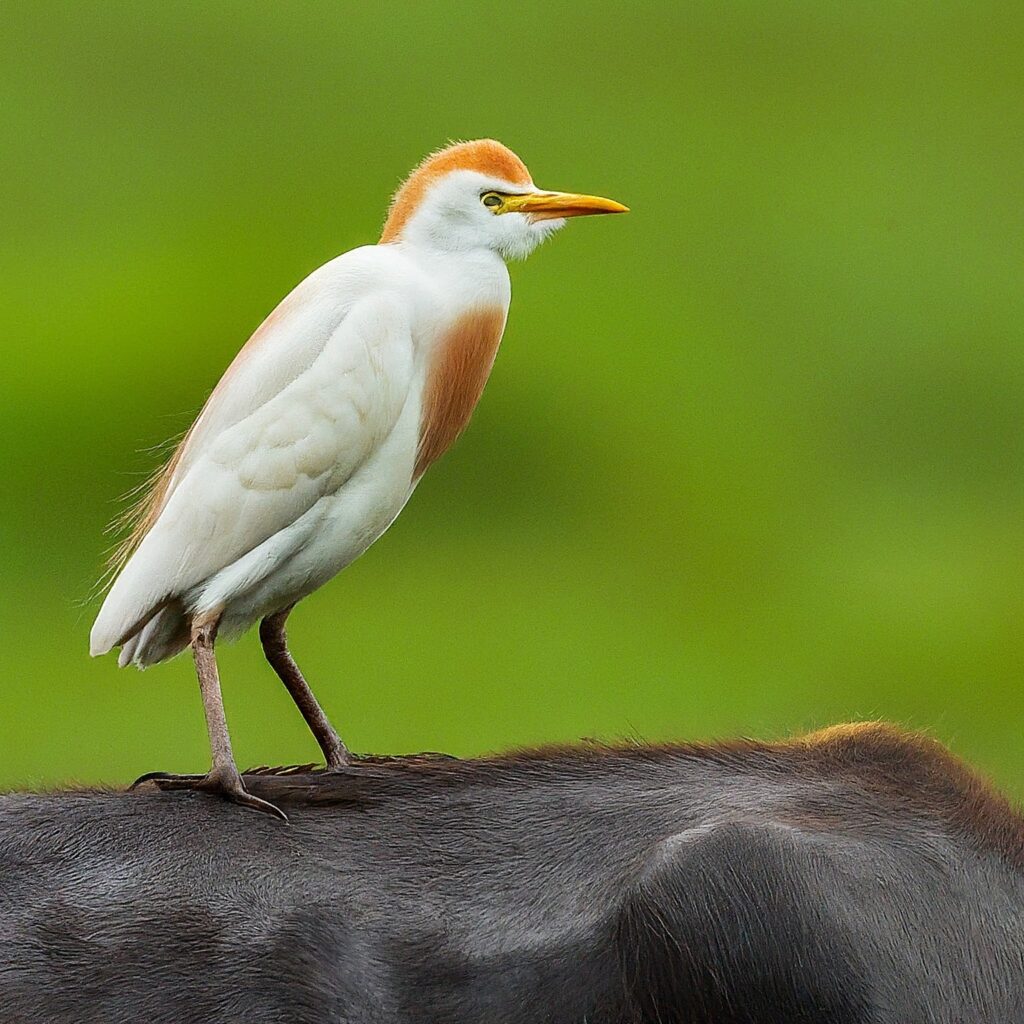
34. Eastern Cattle Egret (Bubulcus coromandus)
The Eastern Cattle Egret, native to Asia and parts of Australasia, is closely associated with large grazing animals. Featuring white plumage and contrasting yellow-orange beak and legs, these herons forage for insects stirred by the movement of cattle and other livestock. Their symbiotic relationship with grazing animals highlights their adaptability and widespread distribution.
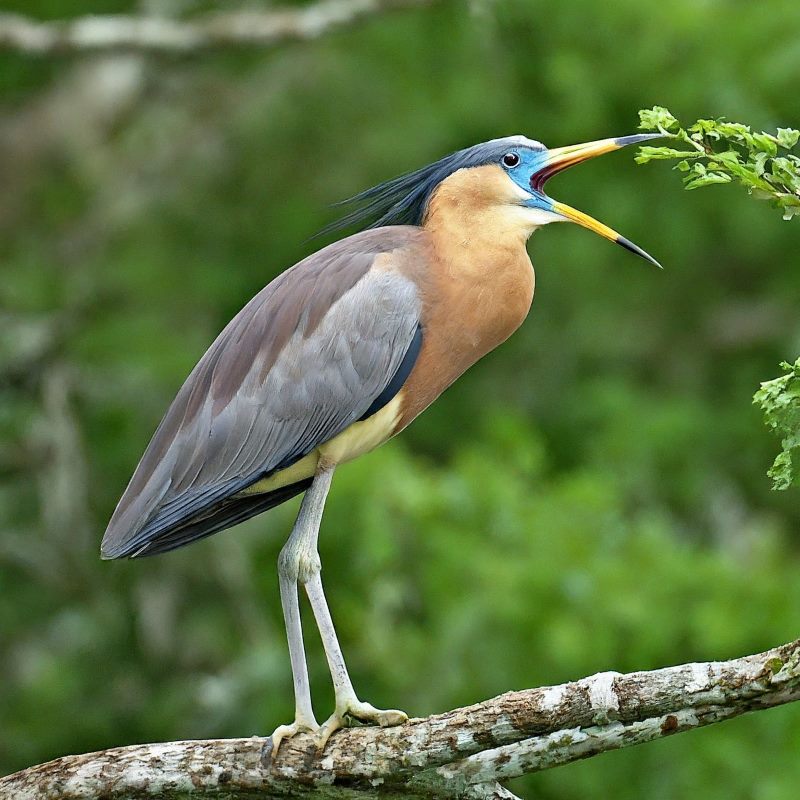
35. Whistling Heron (Syrigma sibilatrix)
The Whistling Heron, found in parts of South America, is recognized for its distinctive and melodious vocalizations. Inhabiting wetlands and grasslands, these herons forage for fish and amphibians. The Whistling Heron’s unique calls and striking appearance contribute to its significance as a species with both auditory and visual allure.
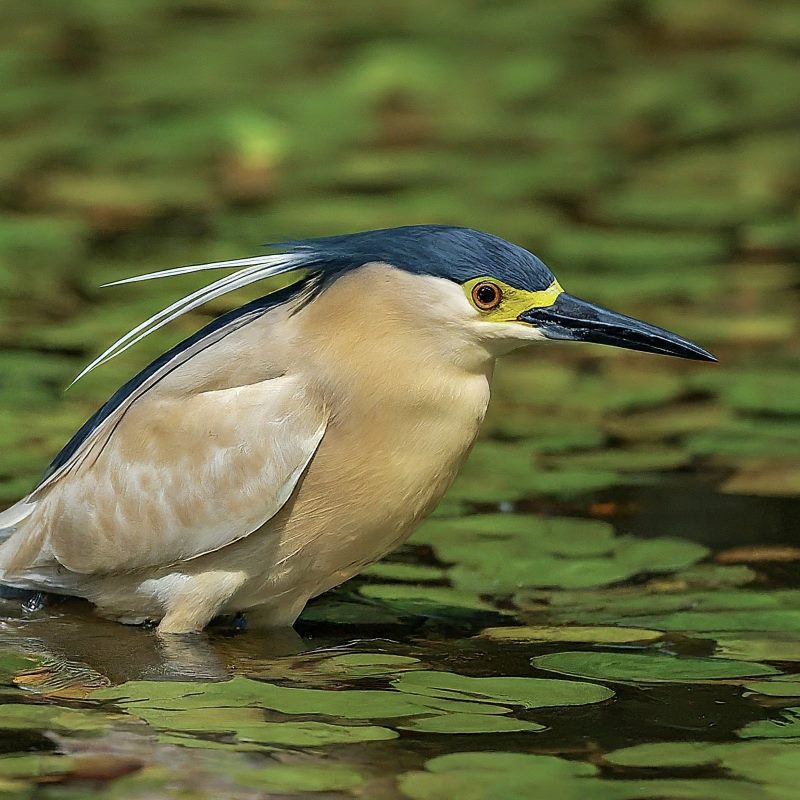
36. Indian Pond Heron (Ardeola grayii)
The Indian Pond Heron, native to South Asia, is characterized by its mottled brown plumage and short stature. Often found in wetlands and rice paddies, these herons are versatile hunters, preying on fish, insects, and small vertebrates. The Indian Pond Heron’s adaptability to urban and rural landscapes makes it a common and resilient species.
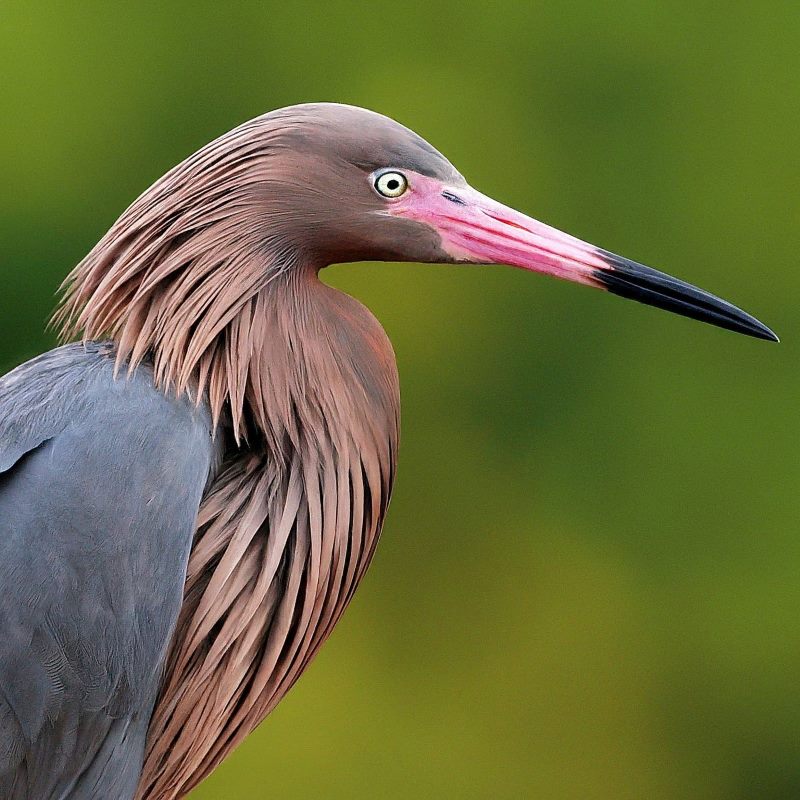
37. Reddish Egret (Egretta rufescens)
The Reddish Egret, native to North and Central America, stands out with its dynamic and acrobatic hunting behavior. Featuring reddish-brown plumage, these herons are often observed using their wings to create shade and attract fish. The Reddish Egret’s animated hunting style adds to its charismatic presence in coastal areas and wetlands.
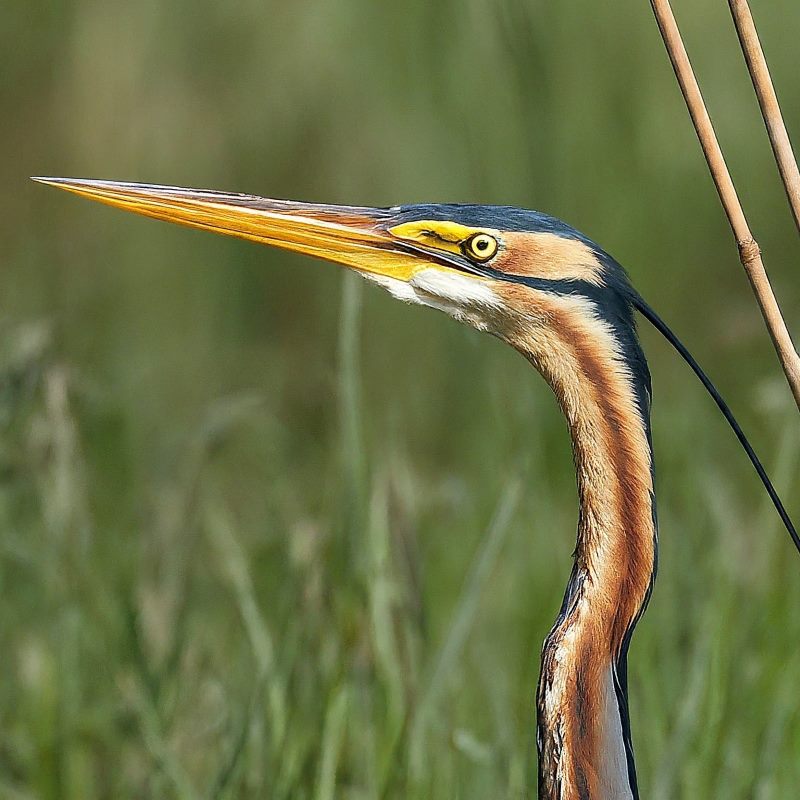
38. Purple Heron (Ardea purpurea)
The Purple Heron, a jewel-toned species found in wetlands and marshes across Europe, Asia, and Africa, showcases rich purple plumage, particularly during the breeding season. Skilled hunters, these herons wade through shallow waters to catch fish, amphibians, and insects. The Purple Heron’s vibrant appearance adds an aesthetic touch to its wetland habitats.
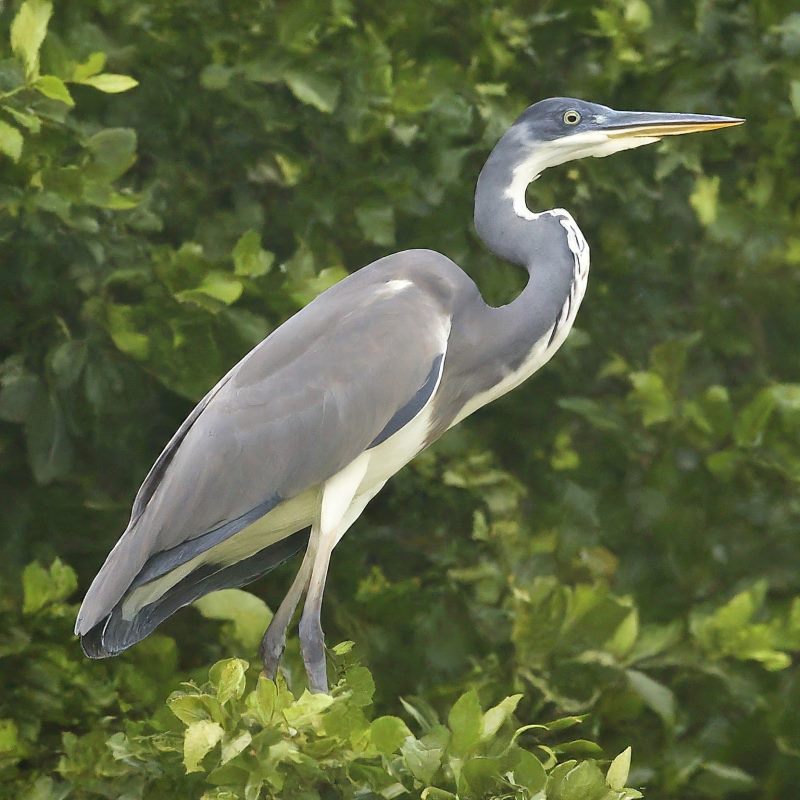
39. White-bellied Heron (Ardea insignis)
The White-bellied Heron, a critically endangered species native to the Eastern Himalayas and Southeast Asia, is characterized by its distinctive white belly and dark plumage. Inhabiting riverine habitats and wetlands, these herons face severe threats from habitat loss and human activities. Conservation efforts are imperative to ensure the survival of this majestic and vulnerable heron species.
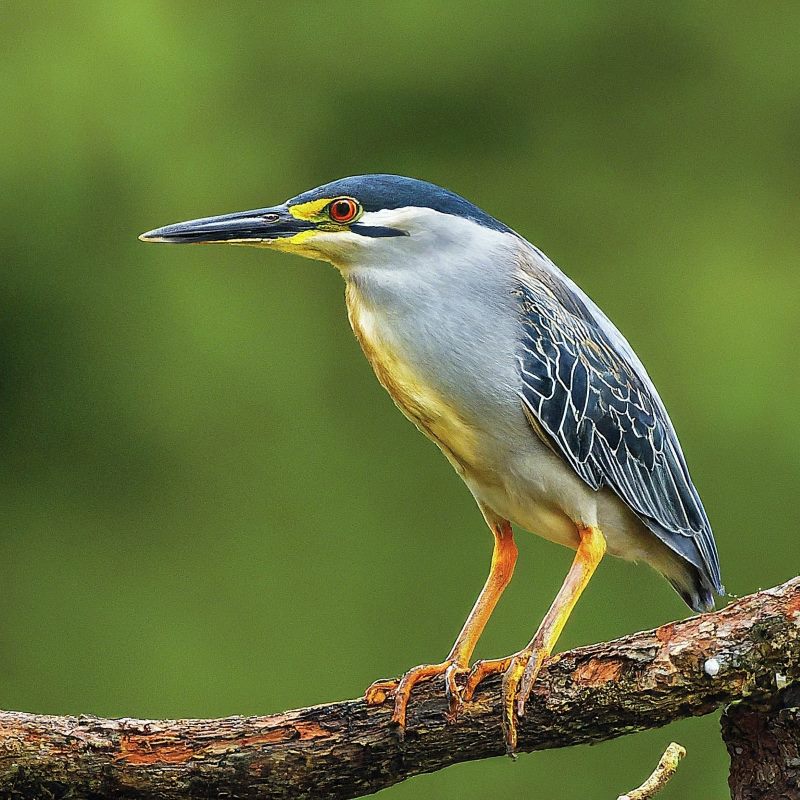
40. Chinese Pond Heron (Ardeola bacchus)
The Chinese Pond Heron, native to East Asia and parts of Southeast Asia, features a variable plumage that changes during the breeding season. Inhabiting wetlands, rice paddies, and ponds, these herons are versatile hunters, preying on fish, insects, and small invertebrates. The Chinese Pond Heron’s adaptability and diverse color morphs contribute to its significance as a heron species.
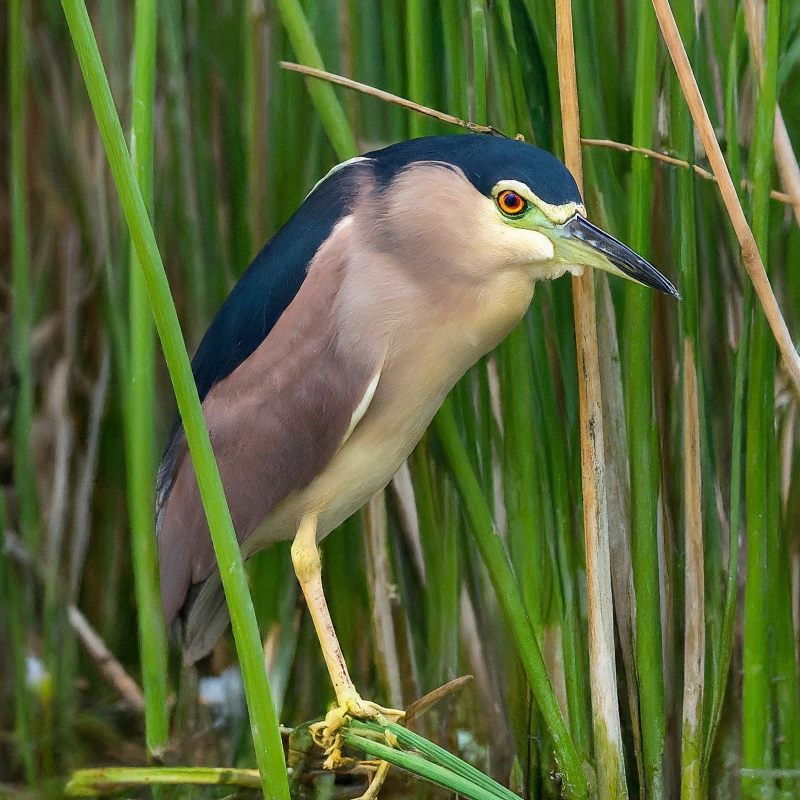
41. Malayan Night Heron (Gorsachius melanolophus)
The Malayan Night Heron, found in parts of Southeast Asia, is recognized for its distinctive black crown and nocturnal habits. Inhabiting dense forests and wetlands, these herons navigate through darkness in search of prey. The Malayan Night Heron’s unique features and behavior contribute to its allure as a species adapted to nocturnal environments.
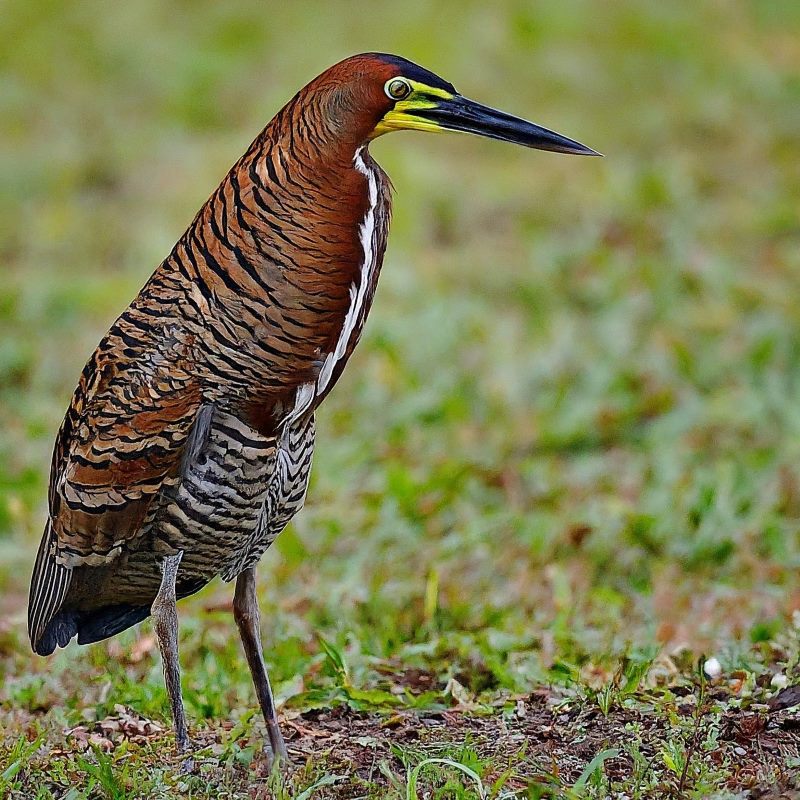
42. Rufescent Tiger Heron (Tigrisoma lineatum)
The Rufescent Tiger Heron, native to Central and South America, is characterized by its rufous plumage and distinctive calls. Inhabiting riverbanks and wetlands, these herons are skilled hunters, capturing fish, amphibians, and small reptiles with their sharp bills. The Rufescent Tiger Heron’s striking appearance and vocalizations make it a captivating species for birdwatchers.
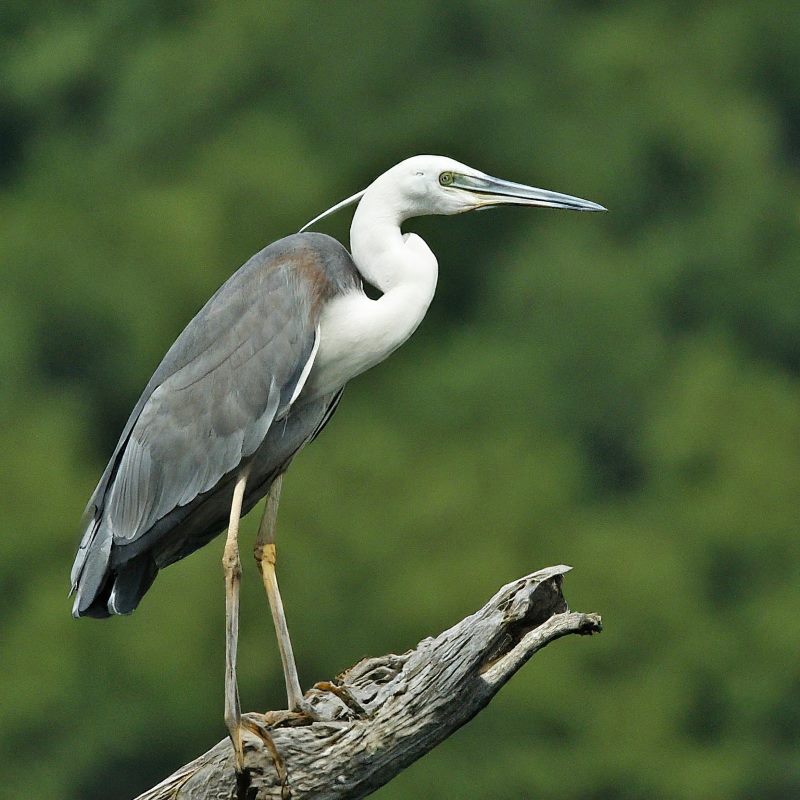
43. White-necked Heron (Ardea pacifica)
The White-necked Heron, found in Australia and parts of Southeast Asia, features a distinctive white neck and a tall stature. Inhabiting estuaries and coastal wetlands, these herons are skilled hunters, capturing a variety of prey, including fish and crustaceans. The White-necked Heron’s striking appearance adds to its significance as a heron species in the southern hemisphere.
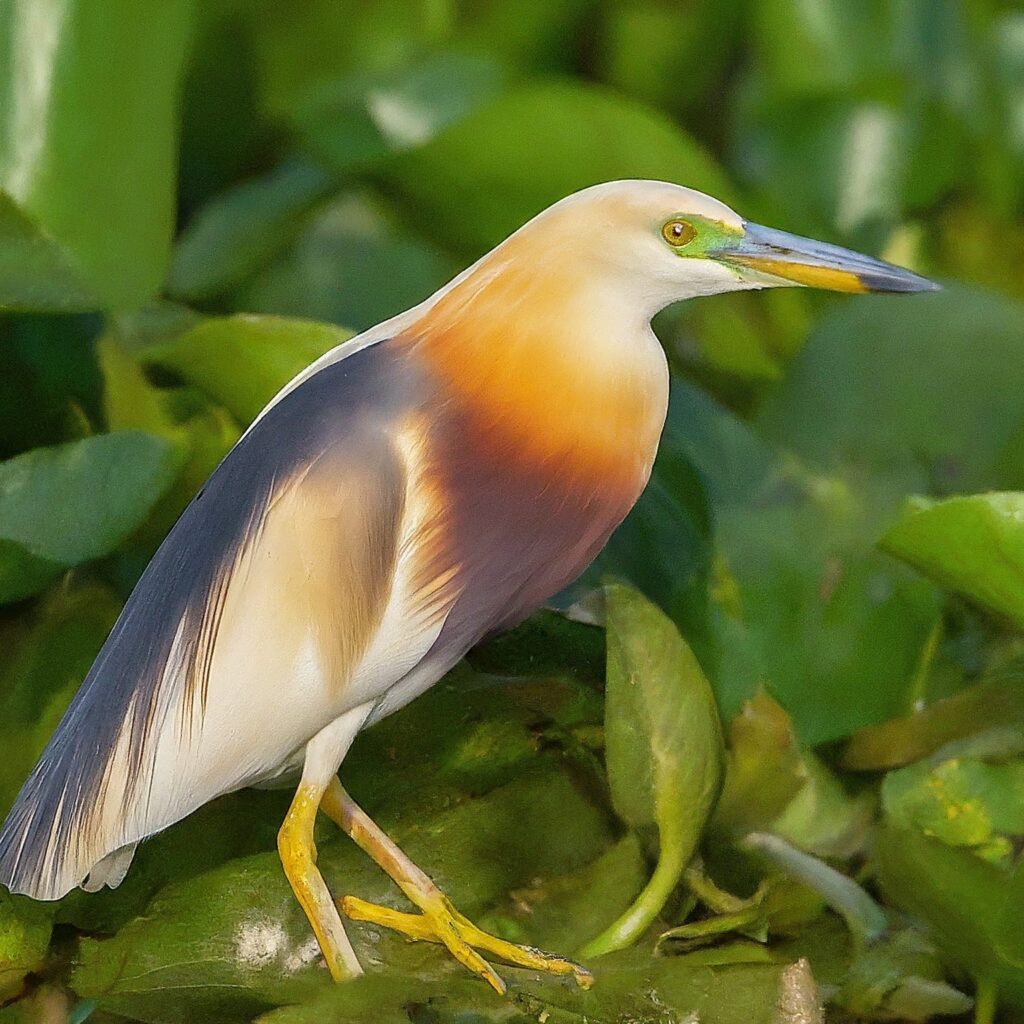
44. Javan Pond Heron (Ardeola speciosa)
The Javan Pond Heron, native to Southeast Asia, exhibits a variable plumage that changes during the breeding season. Inhabiting wetlands, rice paddies, and ponds, these herons are versatile hunters, preying on fish, insects, and small invertebrates. The Javan Pond Heron’s adaptability and diverse color morphs contribute to its significance as a heron species.
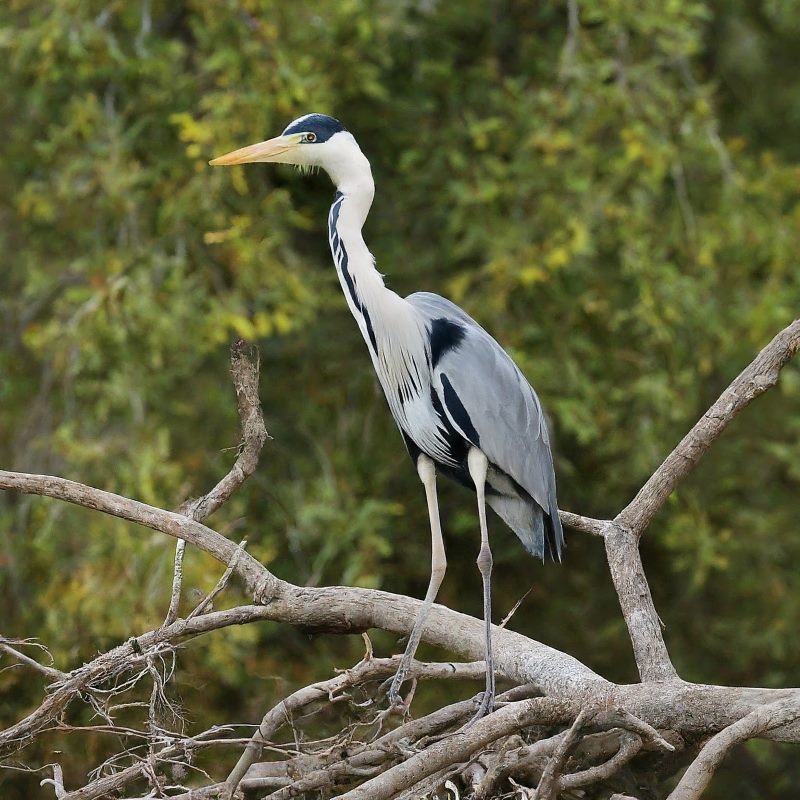
45. Cocoi Heron (Ardea cocoi)
The Cocoi Heron, found in South America, is recognized for its impressive size, featuring a white head and neck and dark plumage. Inhabiting a variety of wetland habitats, including rivers and lakes, these herons are skilled hunters, preying on fish and amphibians. The Cocoi Heron’s imposing presence adds to its significance as one of the larger members of the heron family.
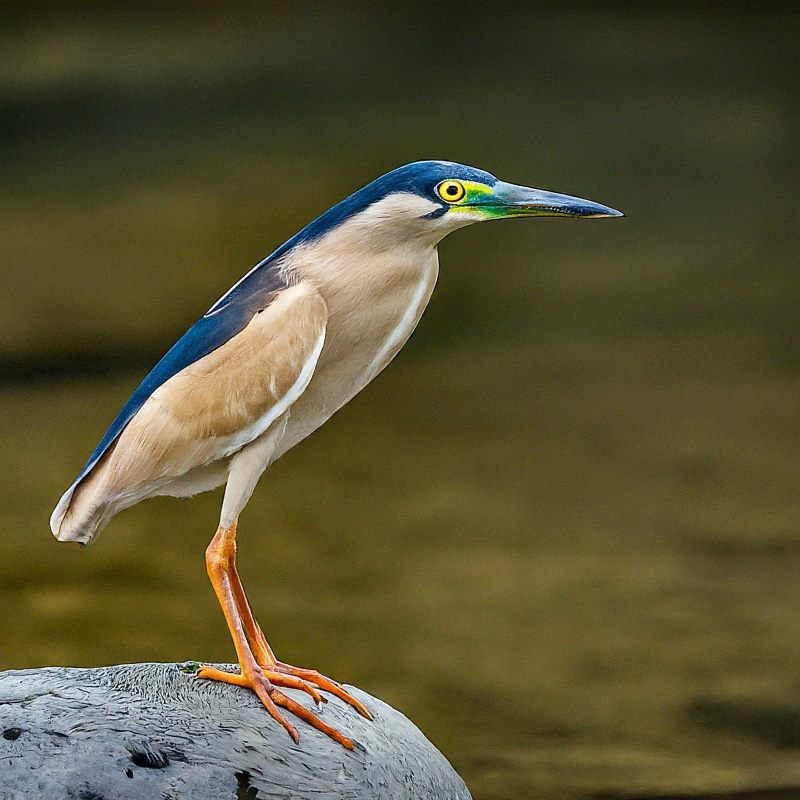
46. Malagasy Pond Heron (Ardeola idae)
The Malagasy Pond Heron, endemic to Madagascar, showcases a distinctive appearance with a mottled brown plumage and a white streak on its face. Inhabiting wetlands and marshes, these herons are often observed foraging in shallow waters for fish and invertebrates. The Malagasy Pond Heron’s restricted distribution highlights the importance of conservation efforts to protect this unique heron species.
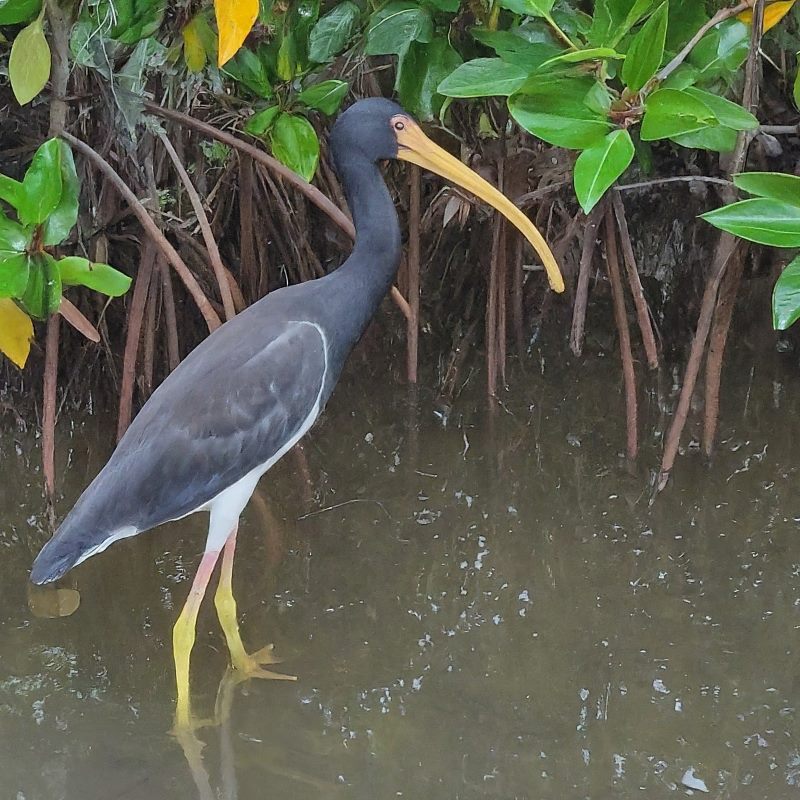
47. Humblot’s Heron (Ardea humbloti)
Humblot’s Heron, named after French naturalist Alfred Grandidier, is endemic to Madagascar. With its distinct black crown, white neck, and dark plumage, this heron is found in freshwater habitats, including rivers and lakes. Due to its restricted range and potential threats, conservation efforts are crucial to ensuring the survival of Humblot’s Heron.
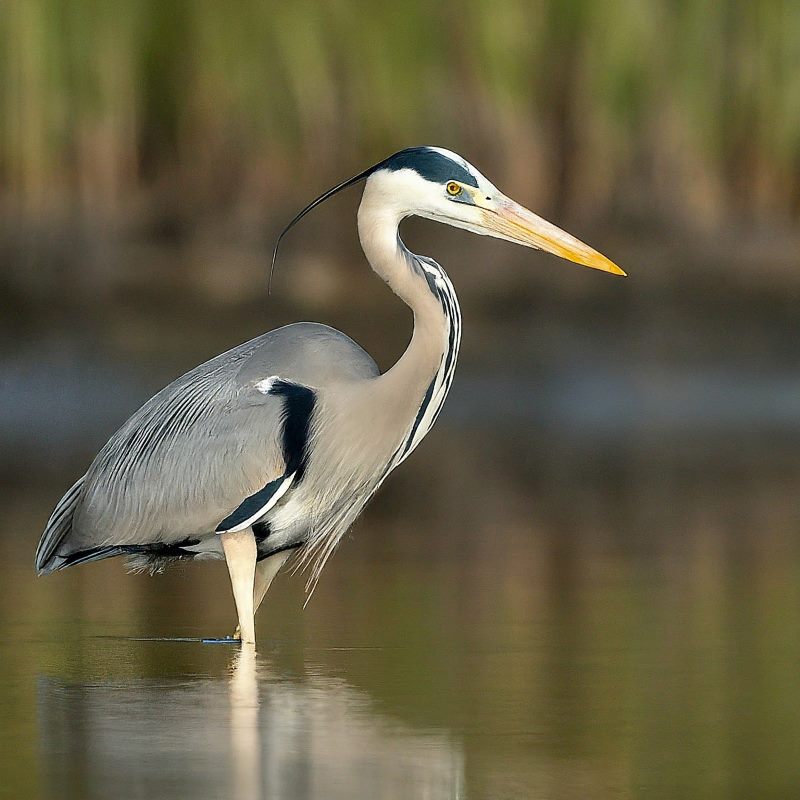
48. Great-billed Heron (Ardea sumatrana)
The Great-billed Heron, found in parts of Southeast Asia and Australasia, is recognized for its large and robust bill. Inhabiting coastal areas and wetlands, these herons are skilled hunters, capturing fish and invertebrates. The Great-billed Heron’s impressive bill and distinctive appearance contribute to its significance as a species adapted to diverse aquatic environments.
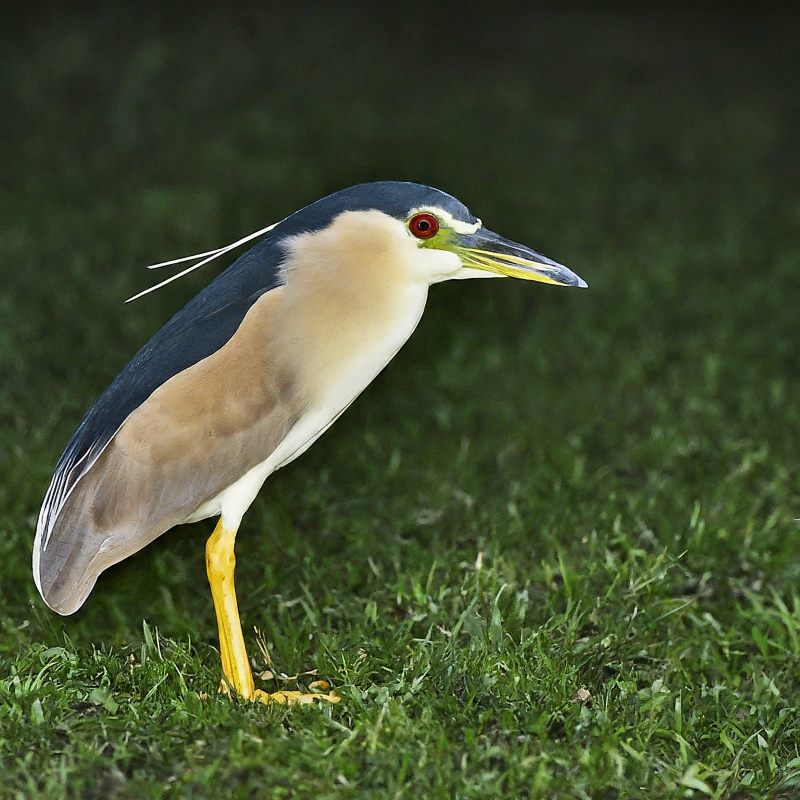
49. Nankeen Night Heron (Nycticorax caledonicus)
The Nankeen Night Heron, native to Australia, New Zealand, and parts of Asia, exhibits a streaked brown plumage and distinctive red eyes. Primarily nocturnal hunters, these herons forage for fish, insects, and crustaceans in coastal areas and wetlands. The Nankeen Night Heron’s adaptability to urban environments makes it a resilient species facing habitat changes.
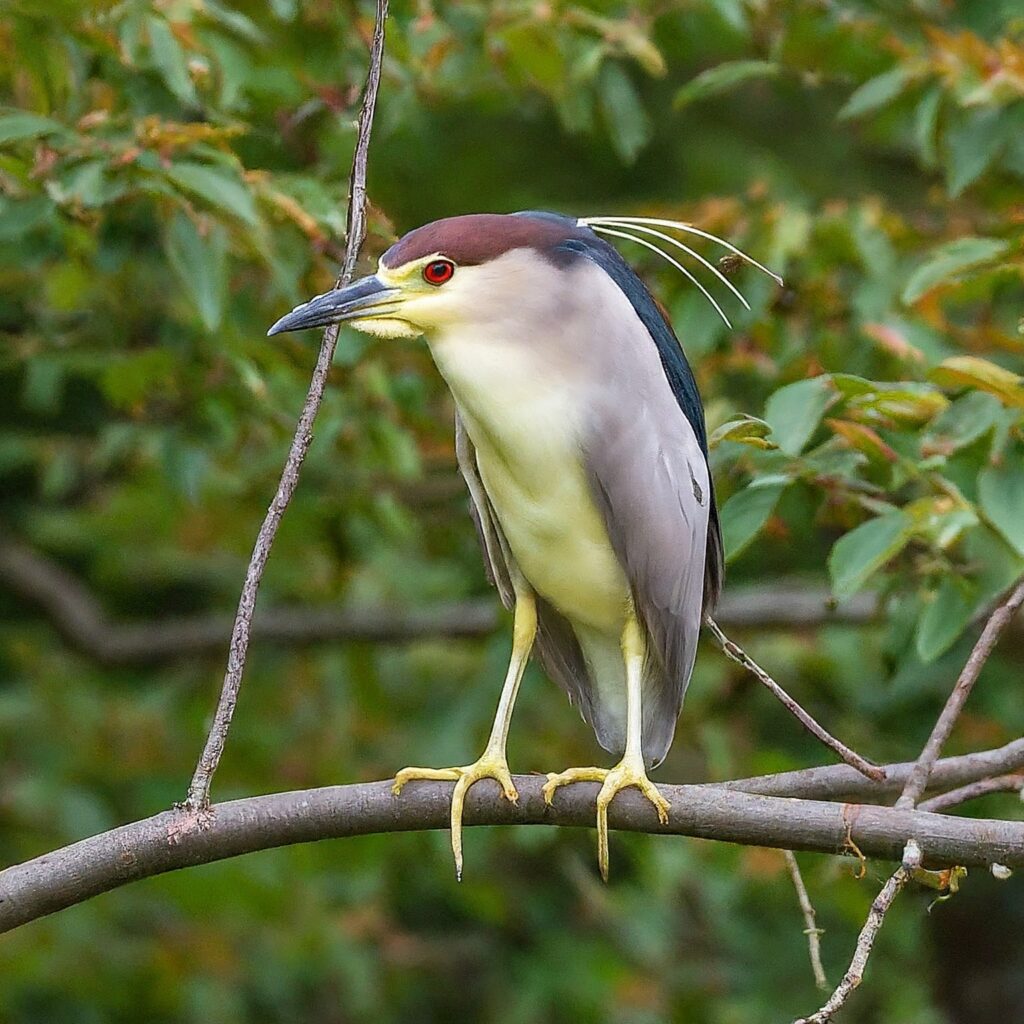
50. Japanese Night Heron (Gorsachius goisagi)
The Japanese Night Heron, found in East Asia, is characterized by its distinctive facial markings and nocturnal habits. Inhabiting wetlands and marshes, these herons navigate through darkness in search of prey. The Japanese Night Heron’s unique features and behavior contribute to its significance as a heron species in the Far East.
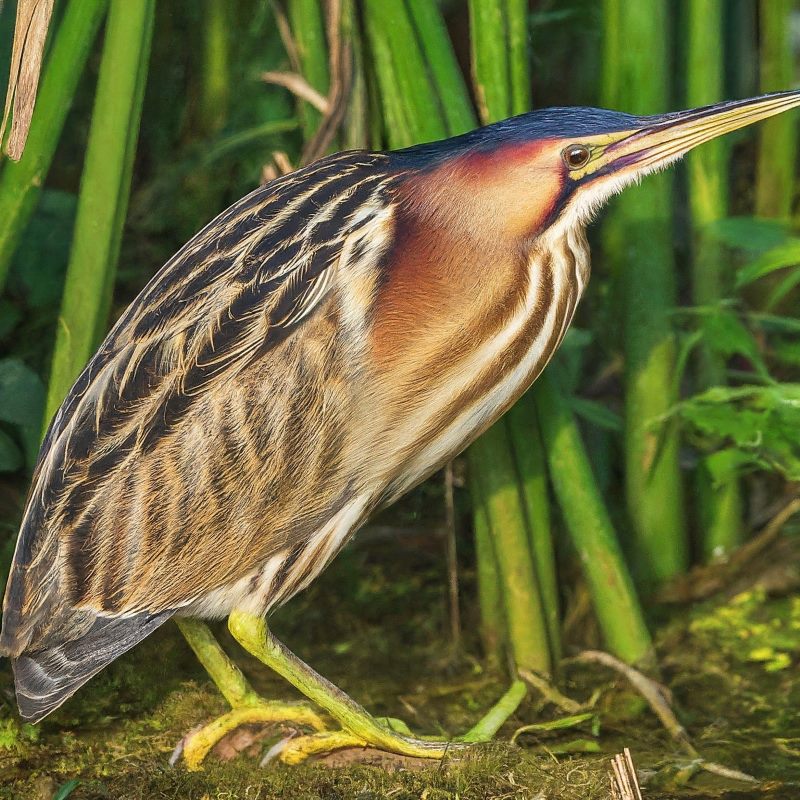
51. Von Schrenck’s Bittern (Ixobrychus eurhythmus)
Von Schrenck’s Bittern, native to East Asia and parts of Southeast Asia, features a streaked brown plumage and a cryptic appearance. Inhabiting reed beds and wetlands, these herons are often challenging to spot due to their secretive nature. Von Schrenck’s Bittern’s adaptability to various aquatic environments highlights its significance as a member of the heron family.
Conclusion
Herons, with their diverse array of species, showcase the adaptability and resilience of avian life in various habitats worldwide. From the majestic Goliath Heron to the elusive Von Schrenck’s Bittern, each heron species plays a unique role in maintaining the ecological balance of wetland ecosystems. As we appreciate their striking appearances, hunting techniques, and diverse habitats, it becomes imperative to prioritize conservation efforts to safeguard these elegant birds and the habitats they depend on. By understanding and celebrating the diversity of heron species, we contribute to the broader effort of preserving the intricate web of life on our planet.
(FAQs) Related to herons:
1. What is a heron?
A heron is a wading bird belonging to the family Ardeidae. These birds are known for their long legs, necks, and bills, and they are often found in or near water, where they hunt for fish, amphibians, and other aquatic prey.
2. How many species of herons are there?
There are over 60 recognized species of herons worldwide. These species vary in size, coloration, and habitat preferences, showcasing the diversity within the heron family.
3. Where are herons found?
Herons are found on every continent except Antarctica. They inhabit a range of environments, including wetlands, marshes, lakes, rivers, and coastal areas.
4. What is the significance of herons in ecosystems?
Herons play a crucial role in maintaining the balance of aquatic ecosystems. As skilled hunters, they help control populations of fish and other aquatic organisms, contributing to the health of wetland habitats.
5. How do herons hunt for food?
Herons use their sharp bills to capture a variety of prey, including fish, amphibians, insects, and small mammals. Their hunting techniques may involve patiently waiting, stalking, or using tools to attract or catch prey.
6. Are all herons the same color?
No, herons exhibit a wide range of colors and patterns. While some species, like the Great Egret, are predominantly white, others, such as the Tricolored Heron, display vibrant colors like blue, gray, and rust.
7. Are herons migratory birds?
Many heron species are migratory, traveling long distances between breeding and wintering grounds. Migration allows them to follow seasonal changes in food availability and weather conditions.
8. Are herons endangered?
While some heron species face threats such as habitat loss, pollution, and human disturbance, not all herons are endangered. Conservation efforts are in place to protect vulnerable species and their habitats.
9. Can herons live in urban areas?
Yes, some heron species have adapted to urban environments. For example, Black-crowned Night Herons are known to nest in urban parks and along waterfronts. Their adaptability showcases the resilience of certain heron species.
10. Are herons related to other bird species?
Herons are part of the larger order Pelecaniformes, which also includes birds like pelicans, ibises, and spoonbills. While they share some common characteristics, herons have distinct features that set them apart as a unique family within this order.

94% of pet owners say their animal pal makes them smile more than once a day. In 2007, I realized that I was made for saving Animals. My father is a Vet, and I think every pet deserves one. I started this blog, “InPetCare”, in 2019 with my father to enlighten a wider audience.
